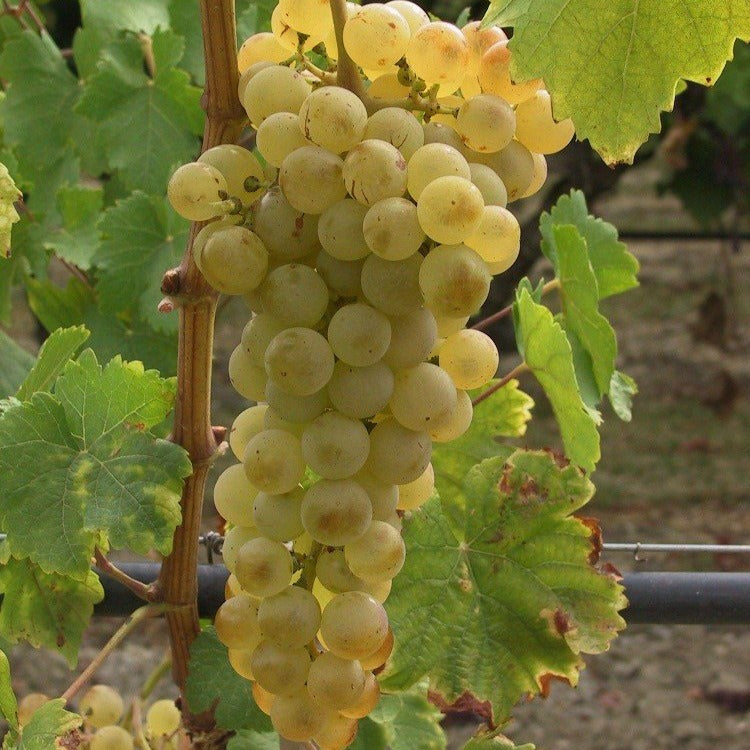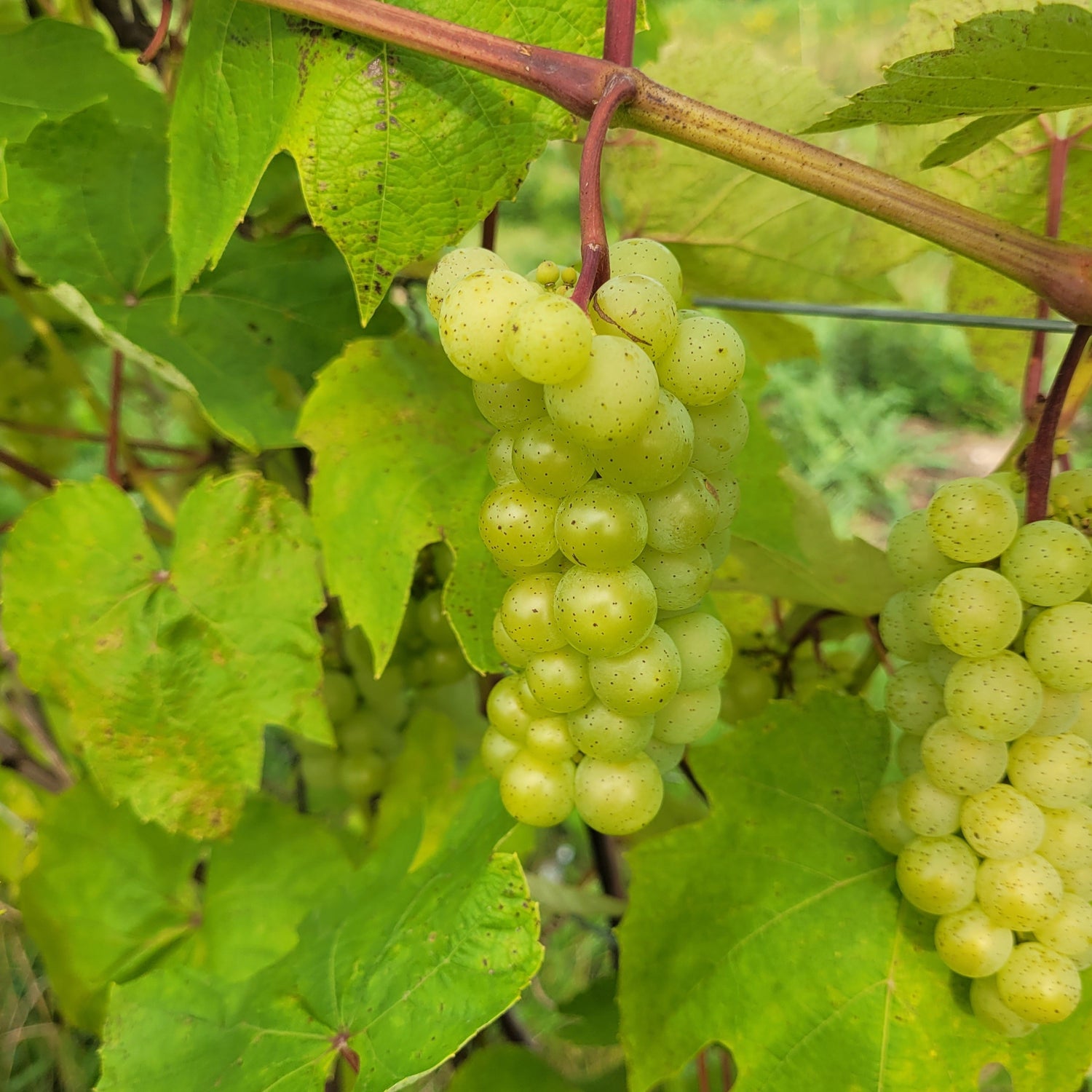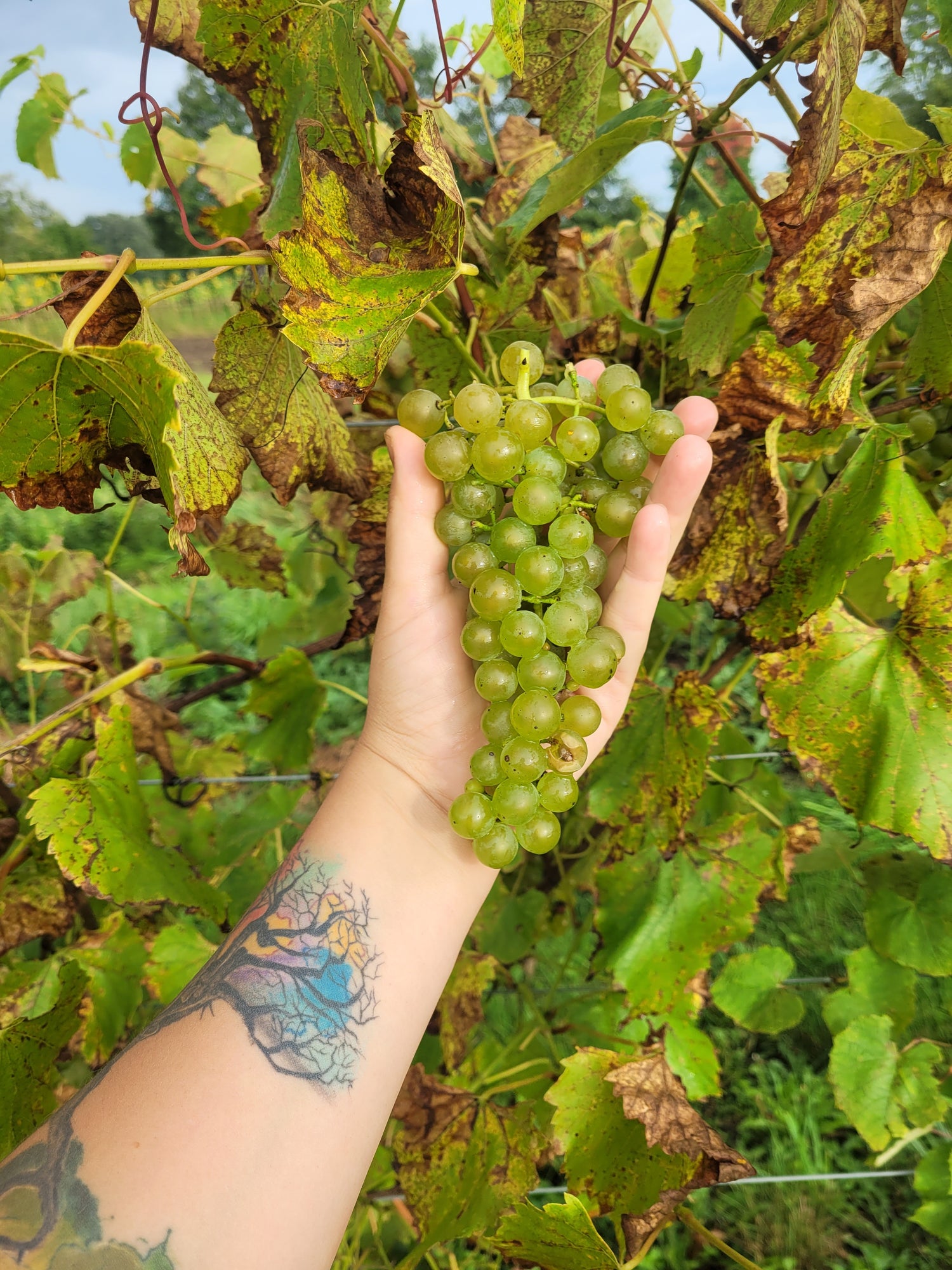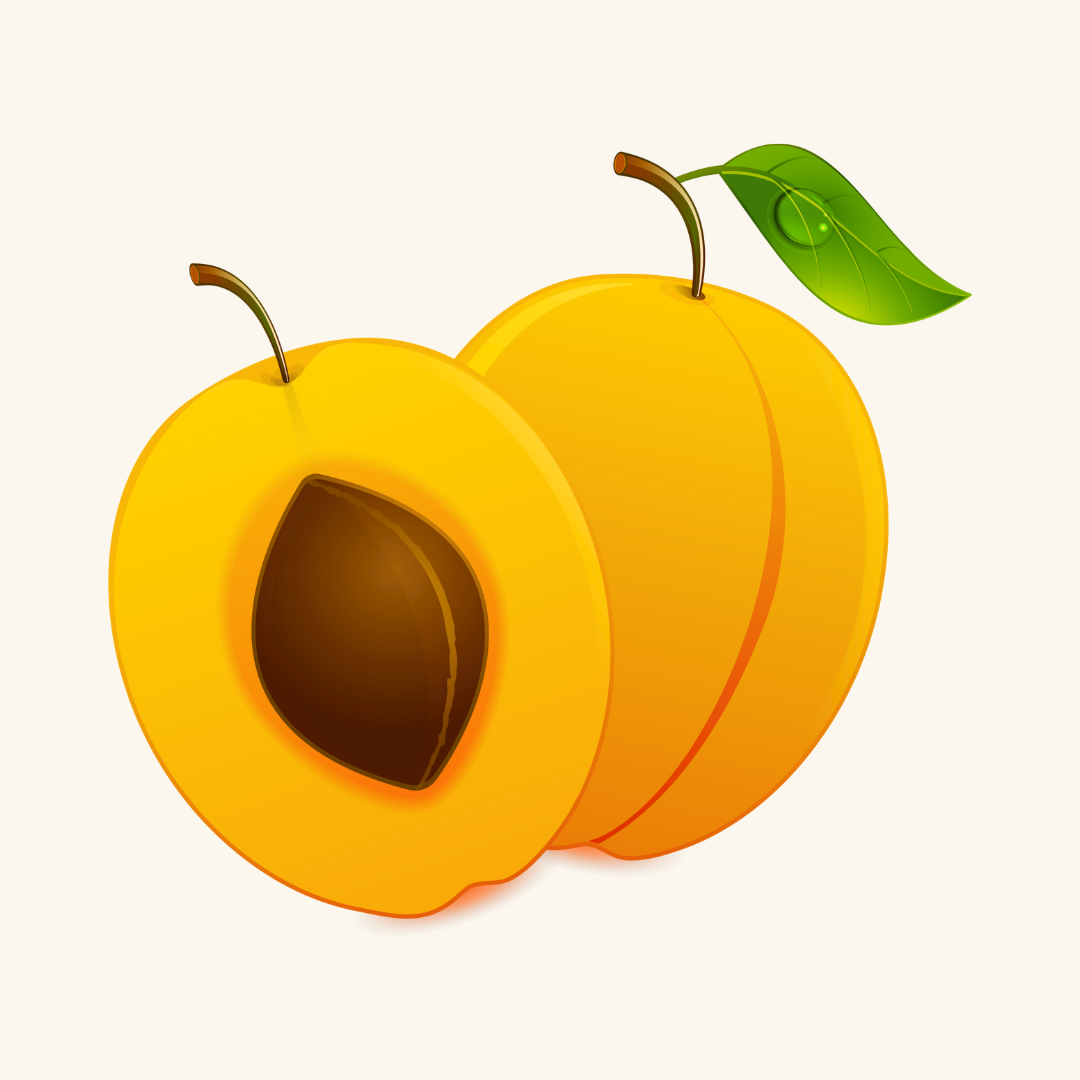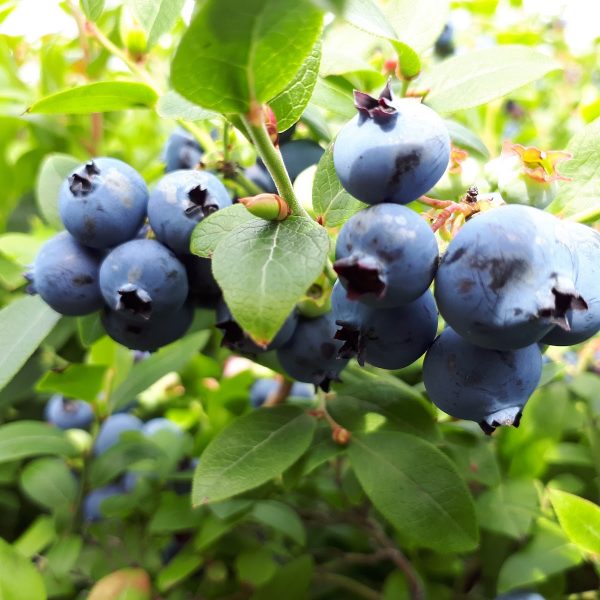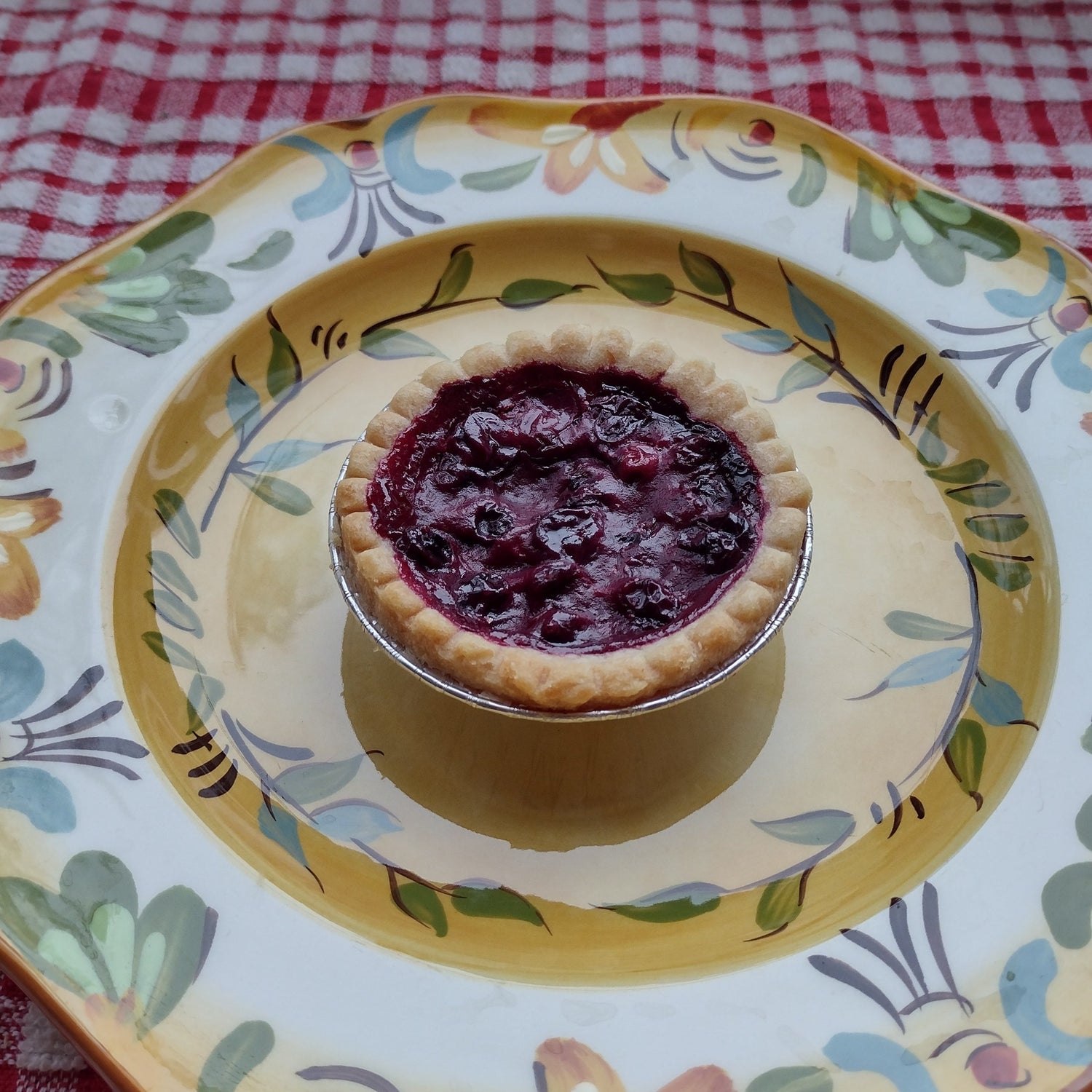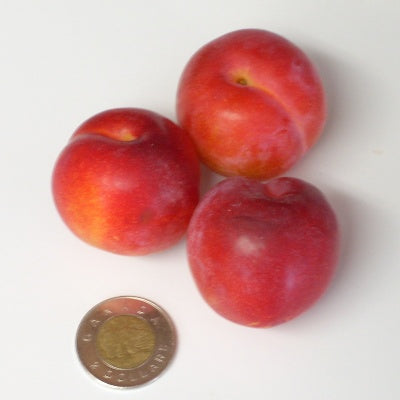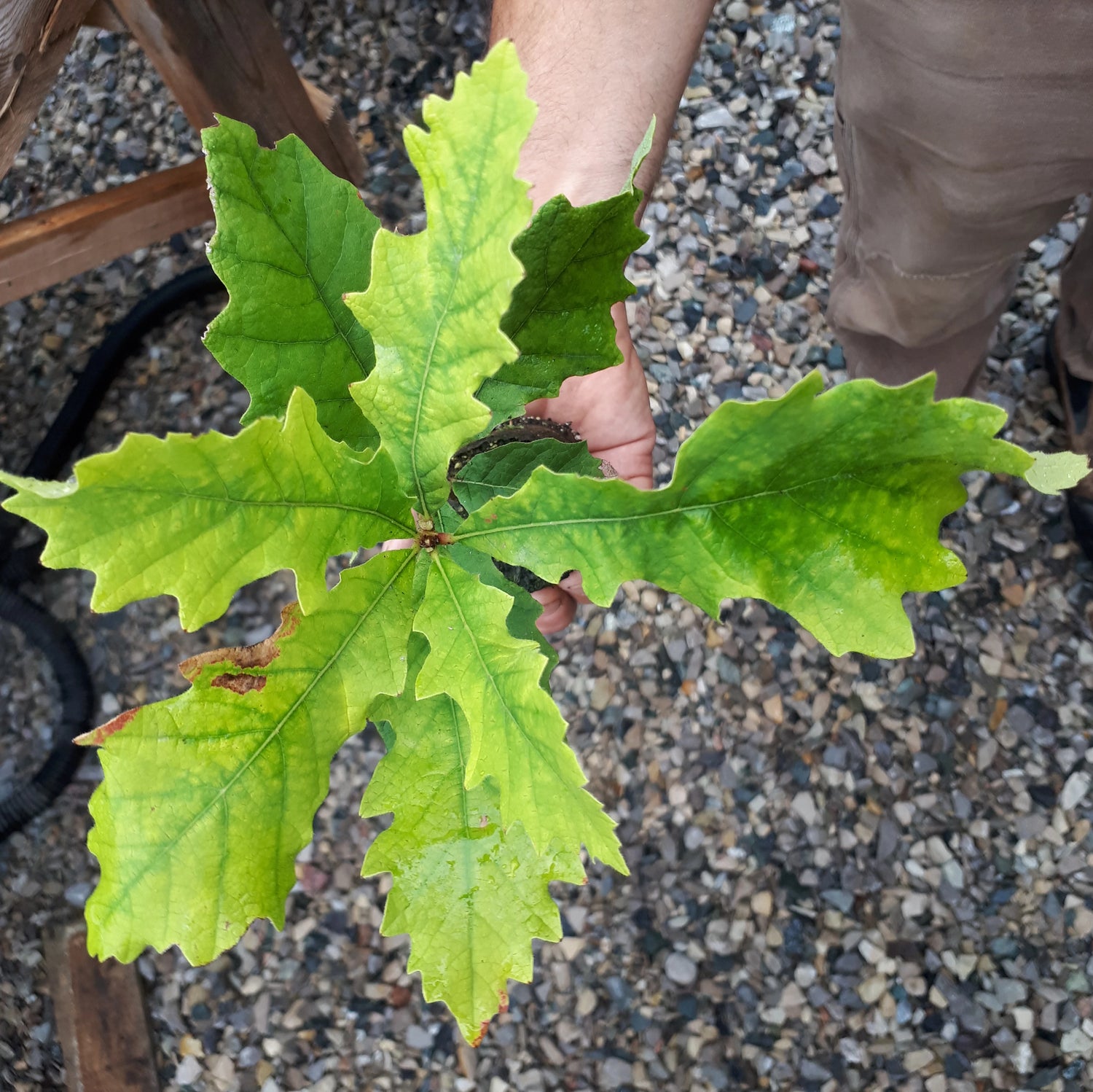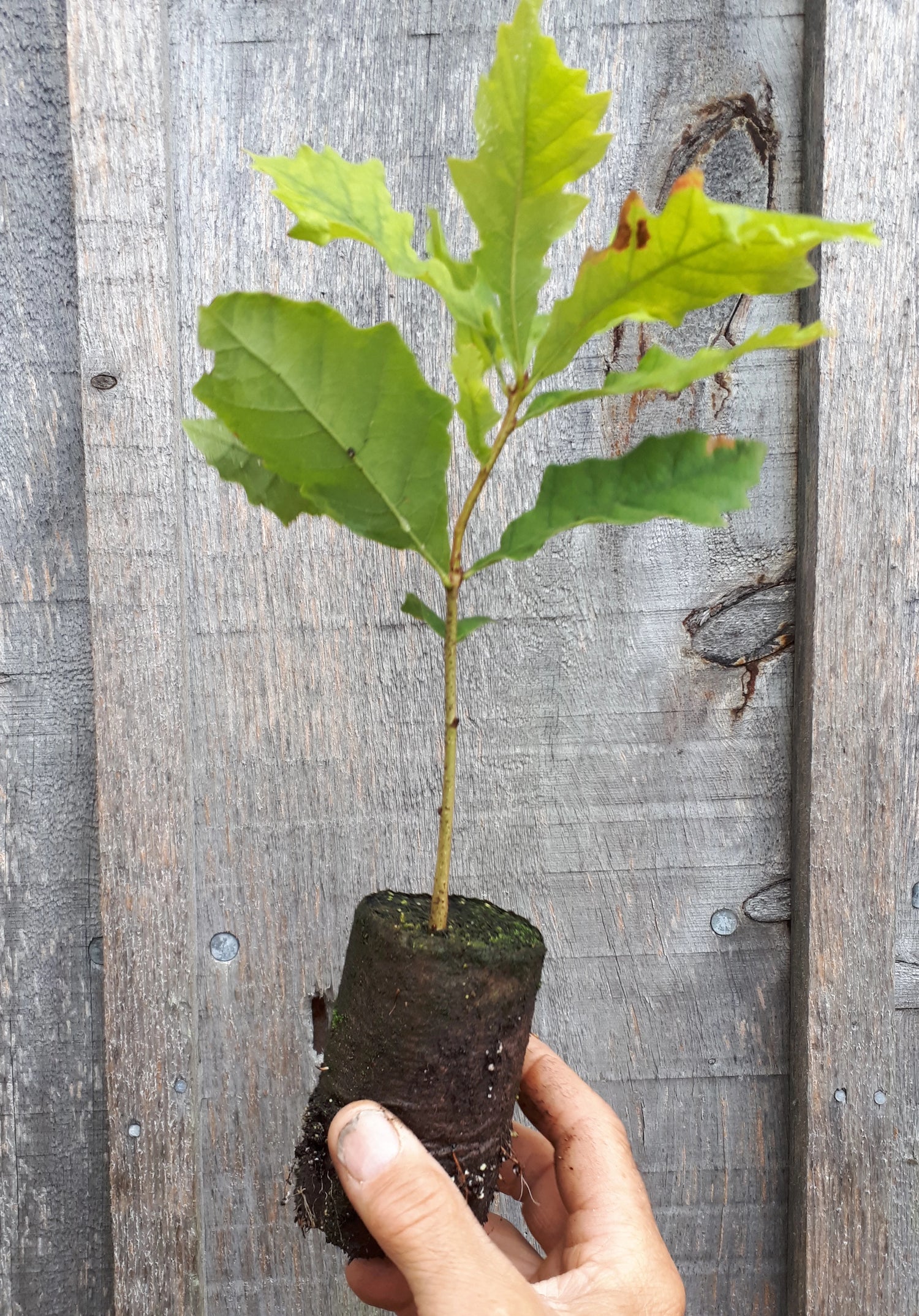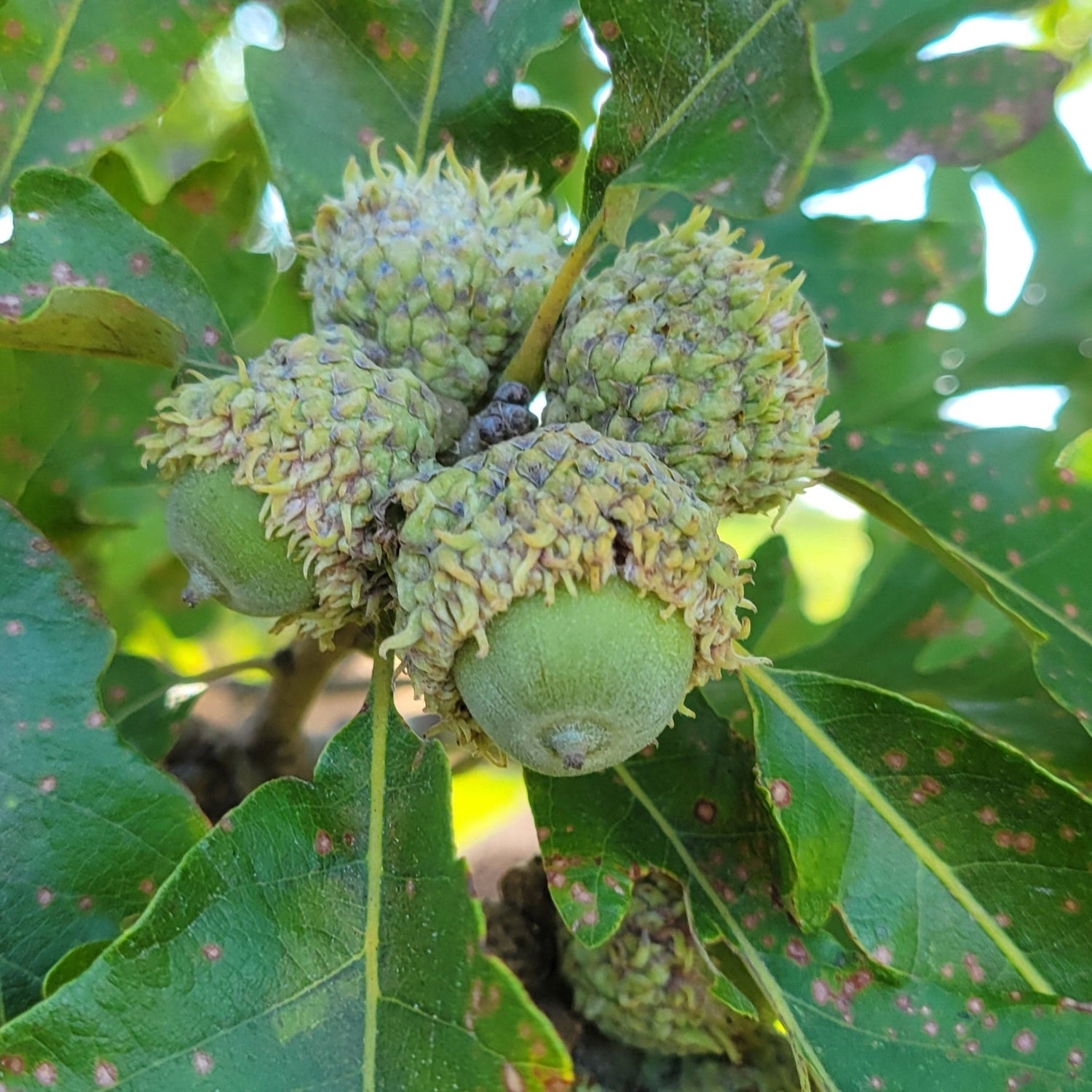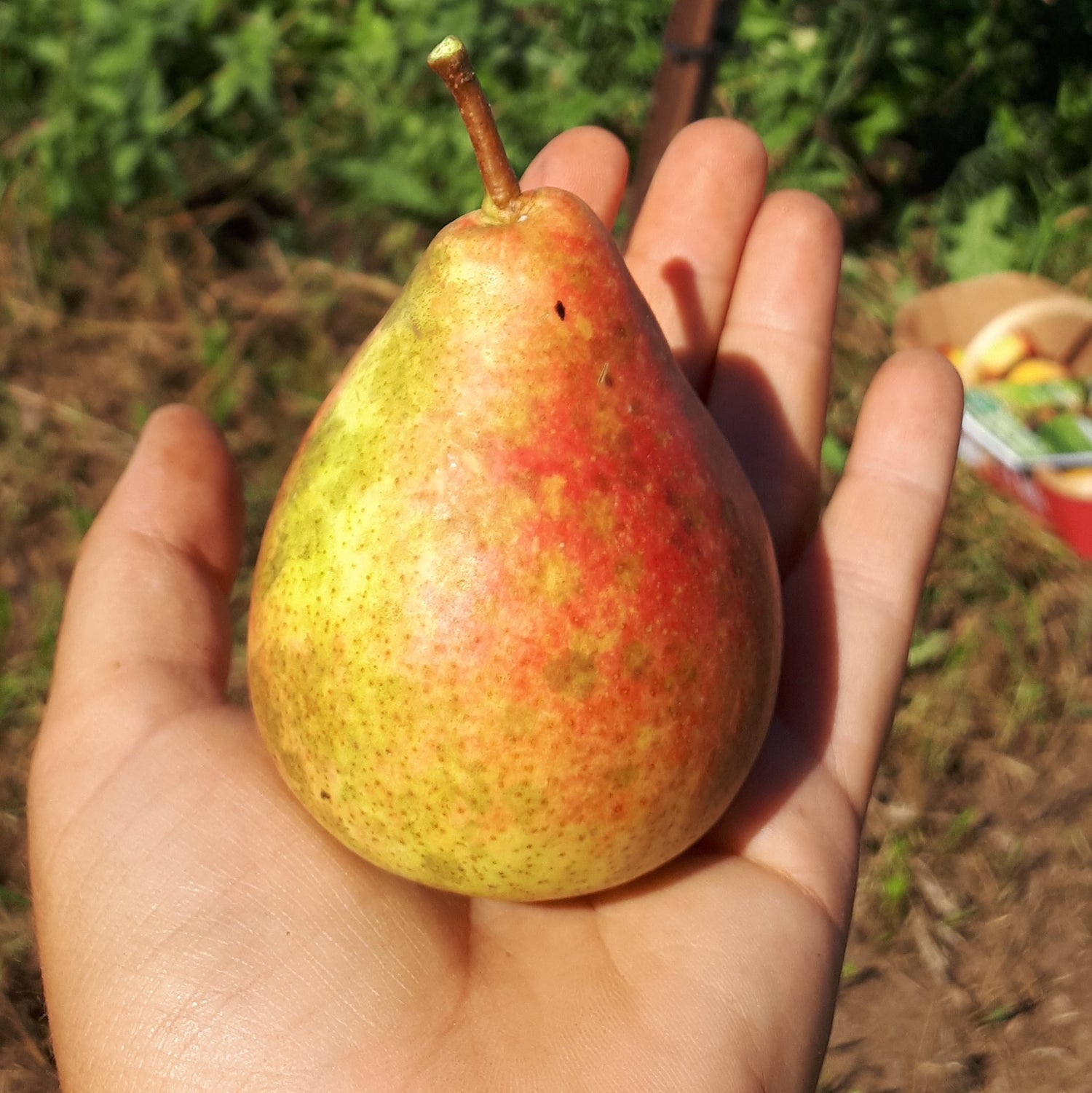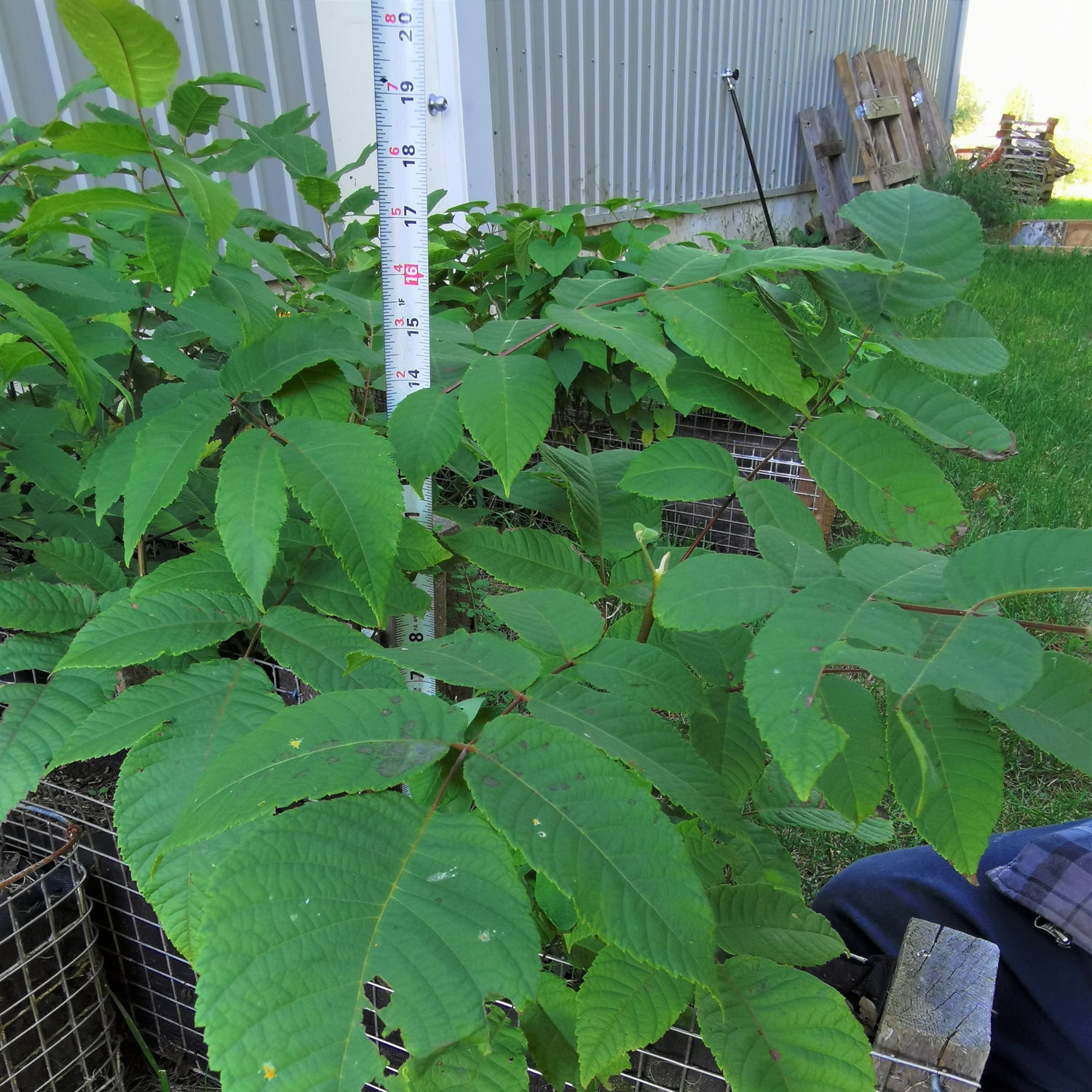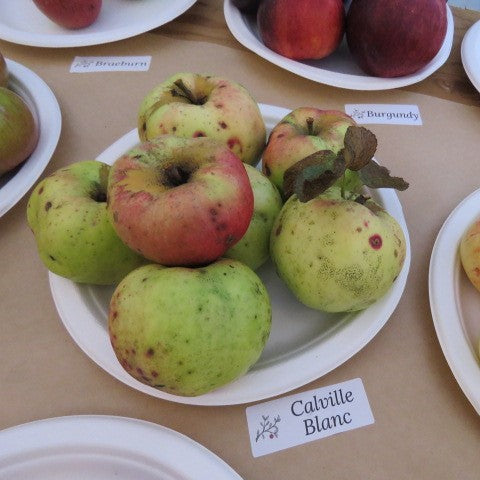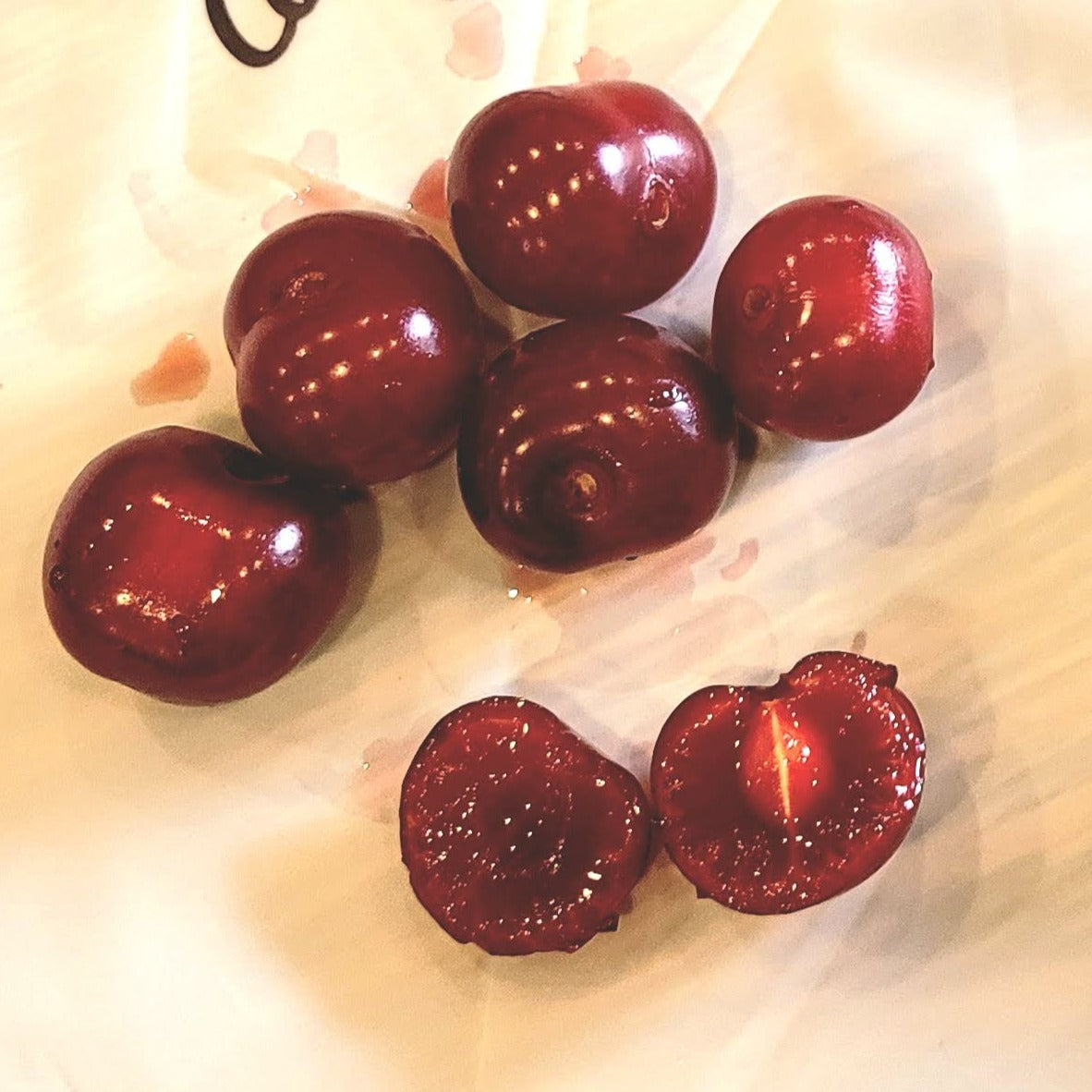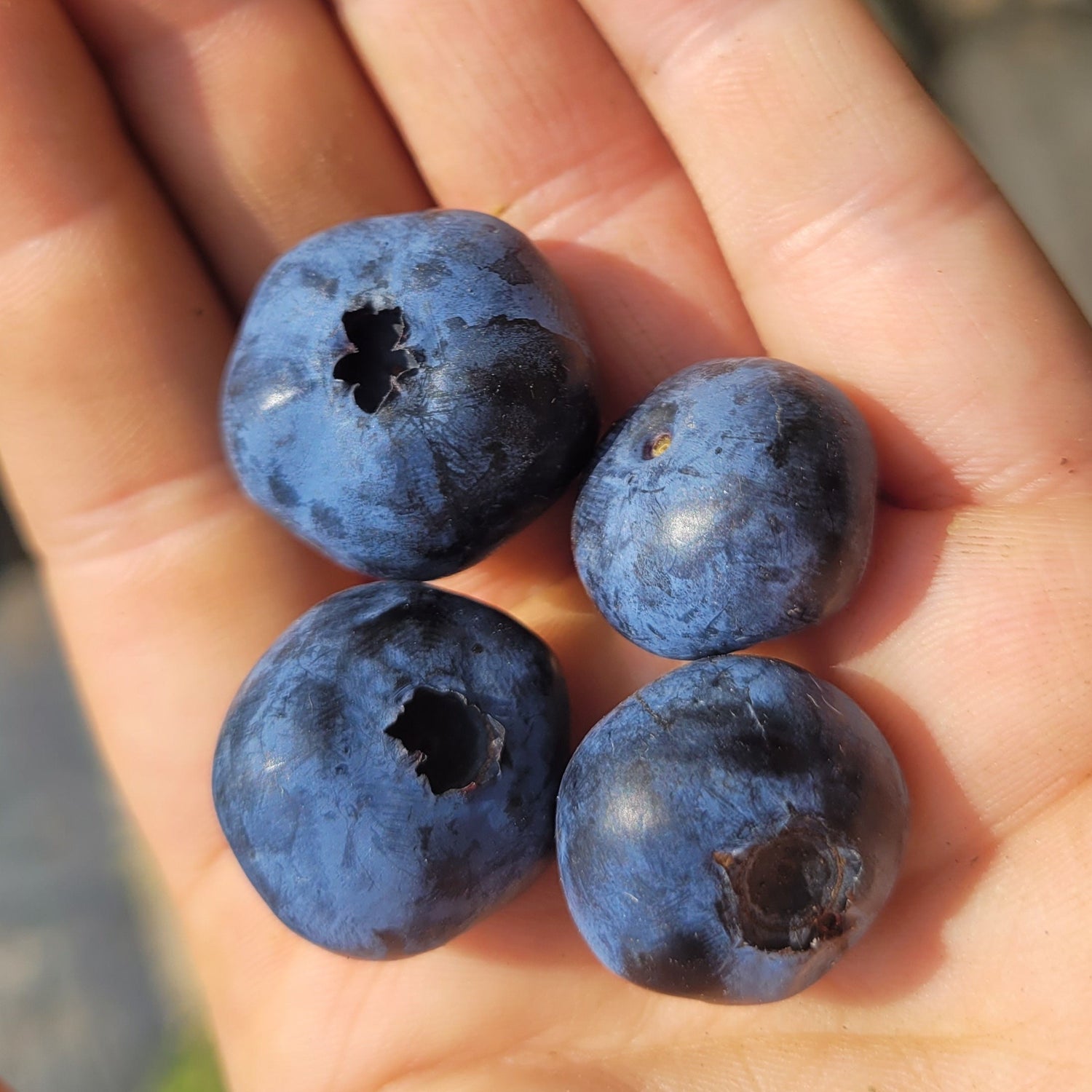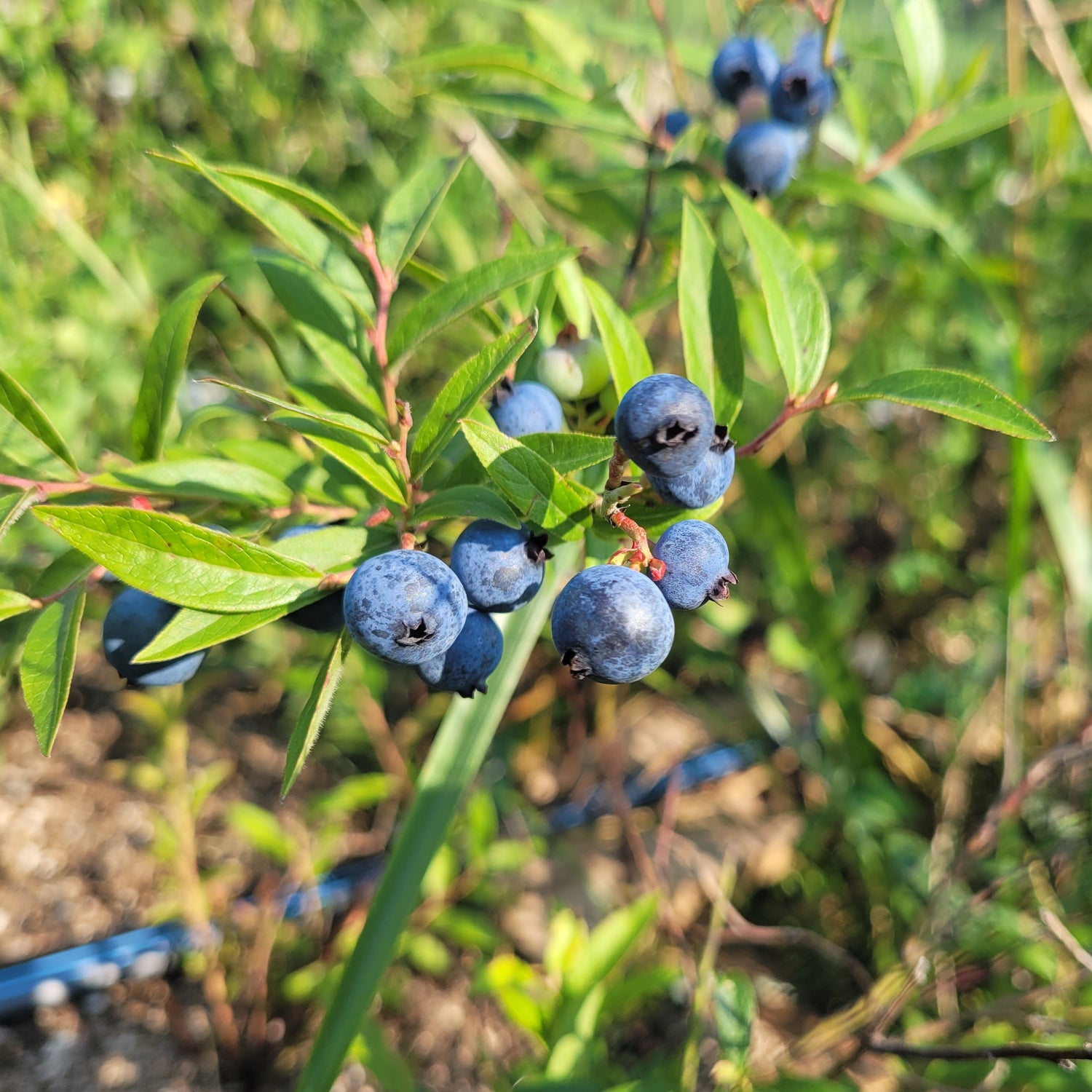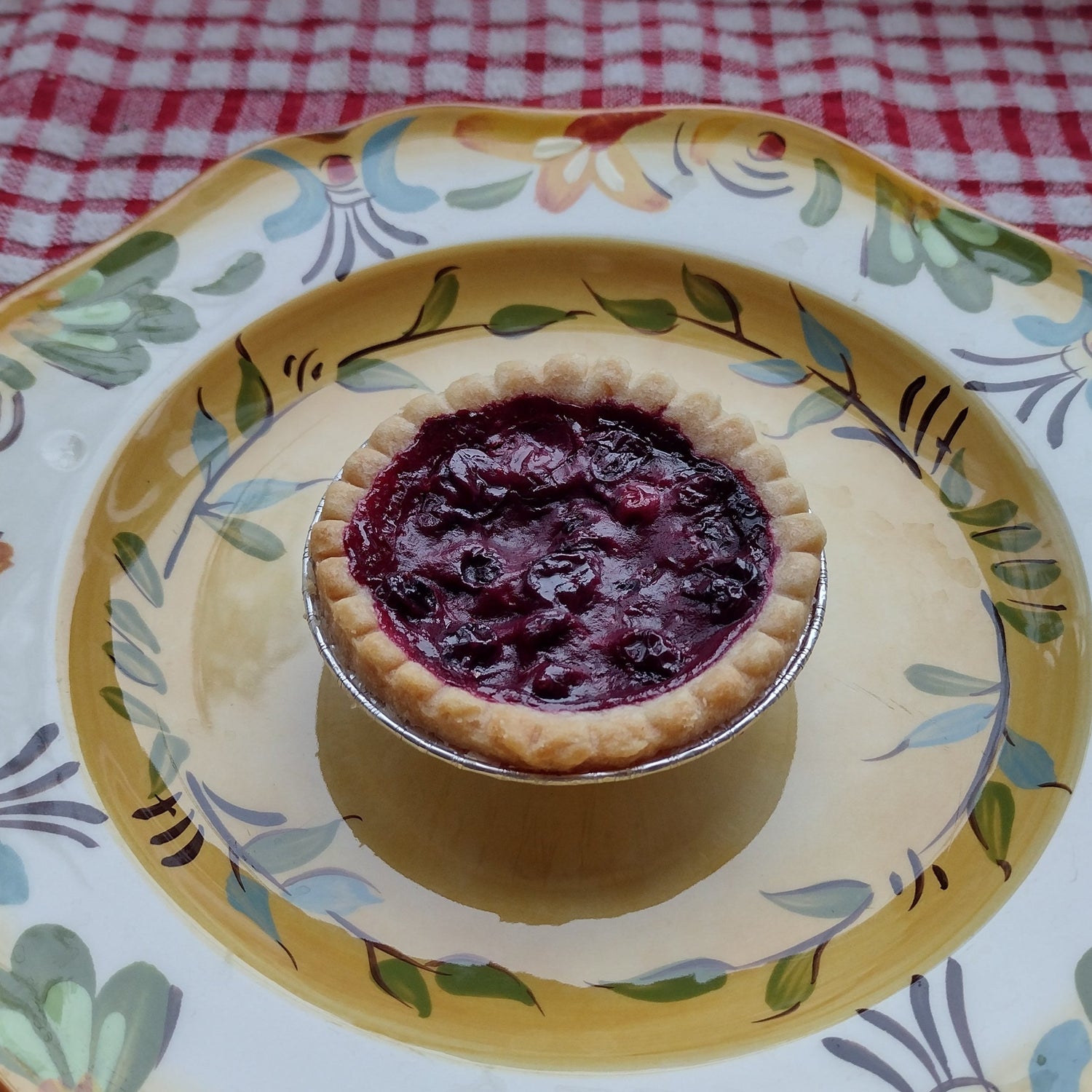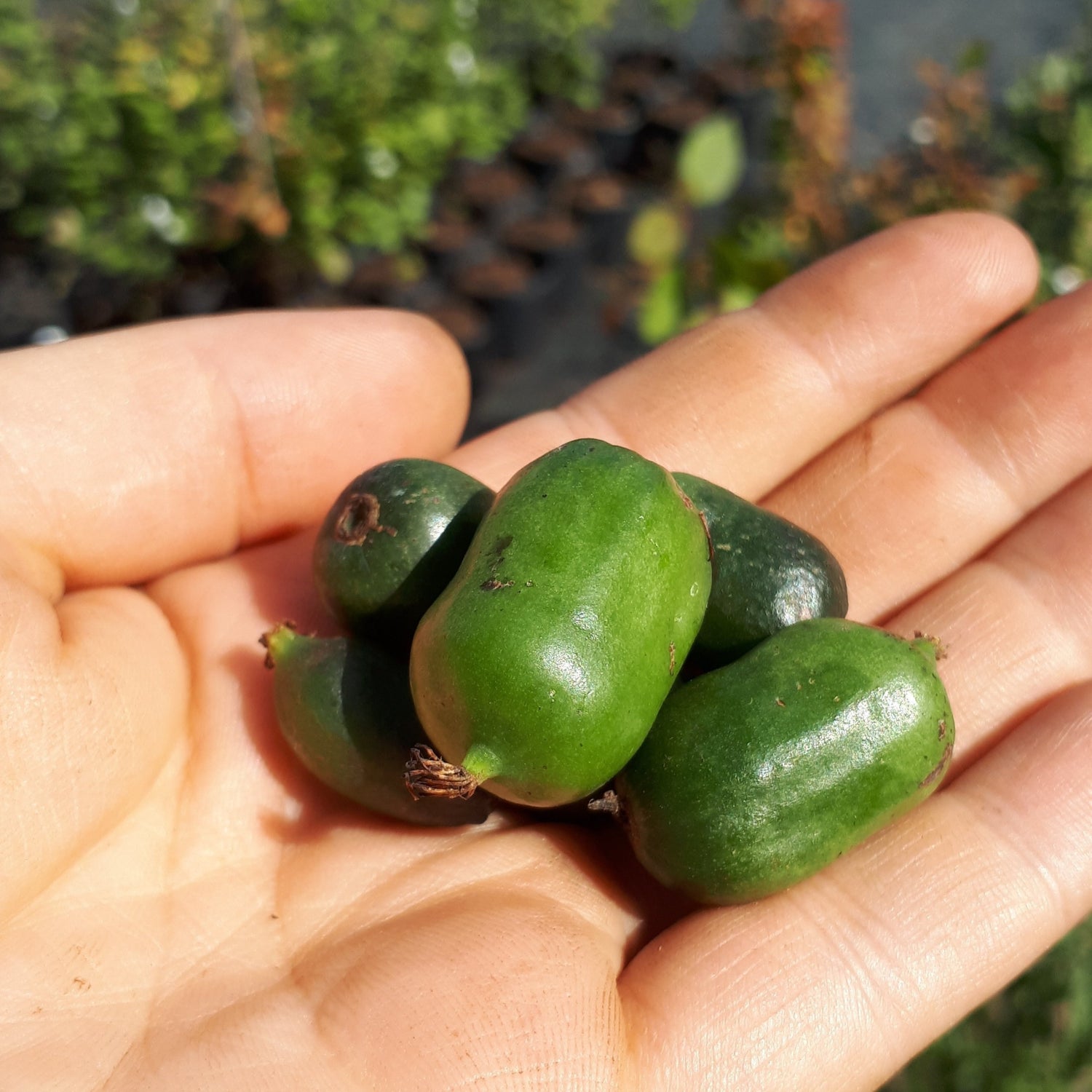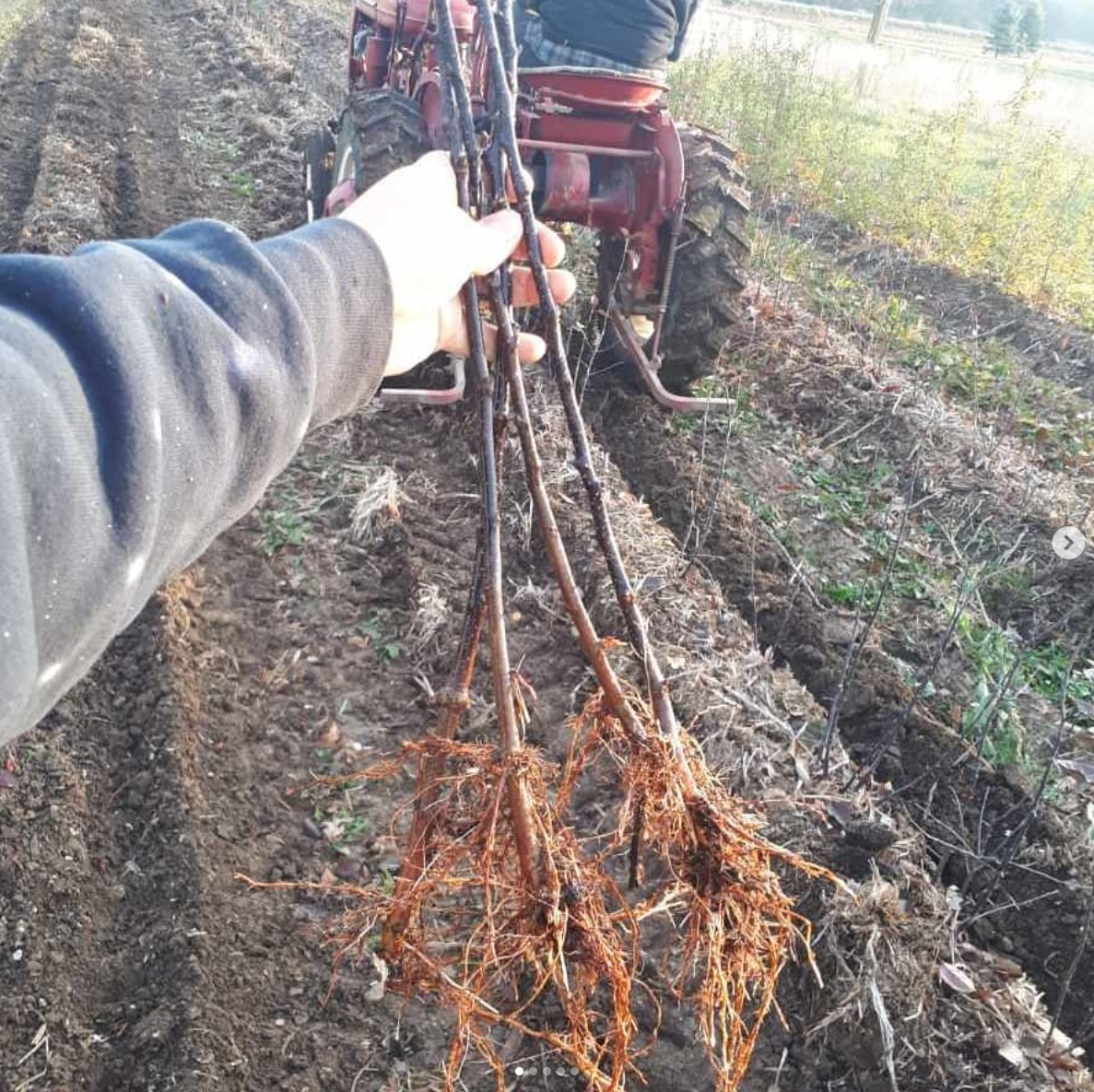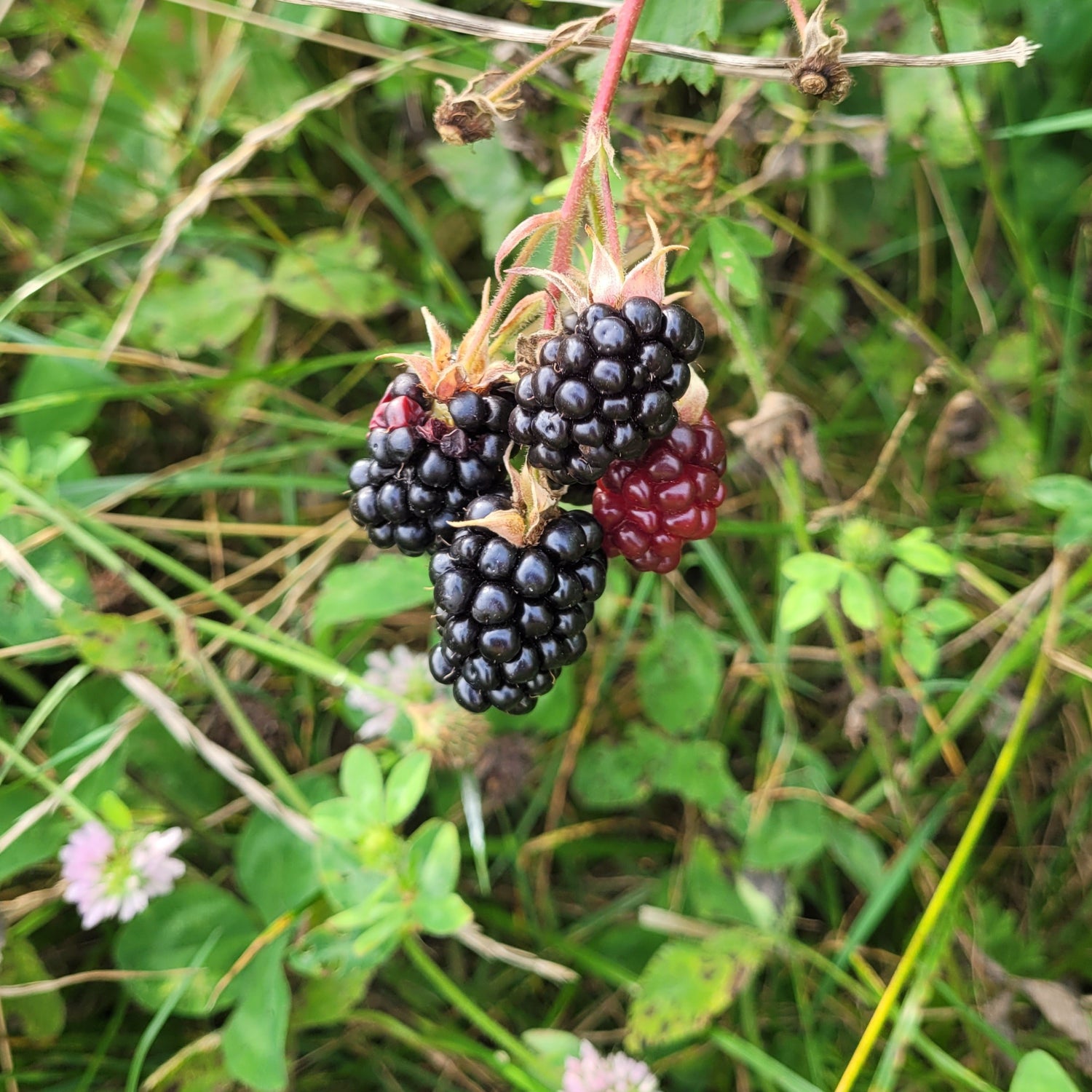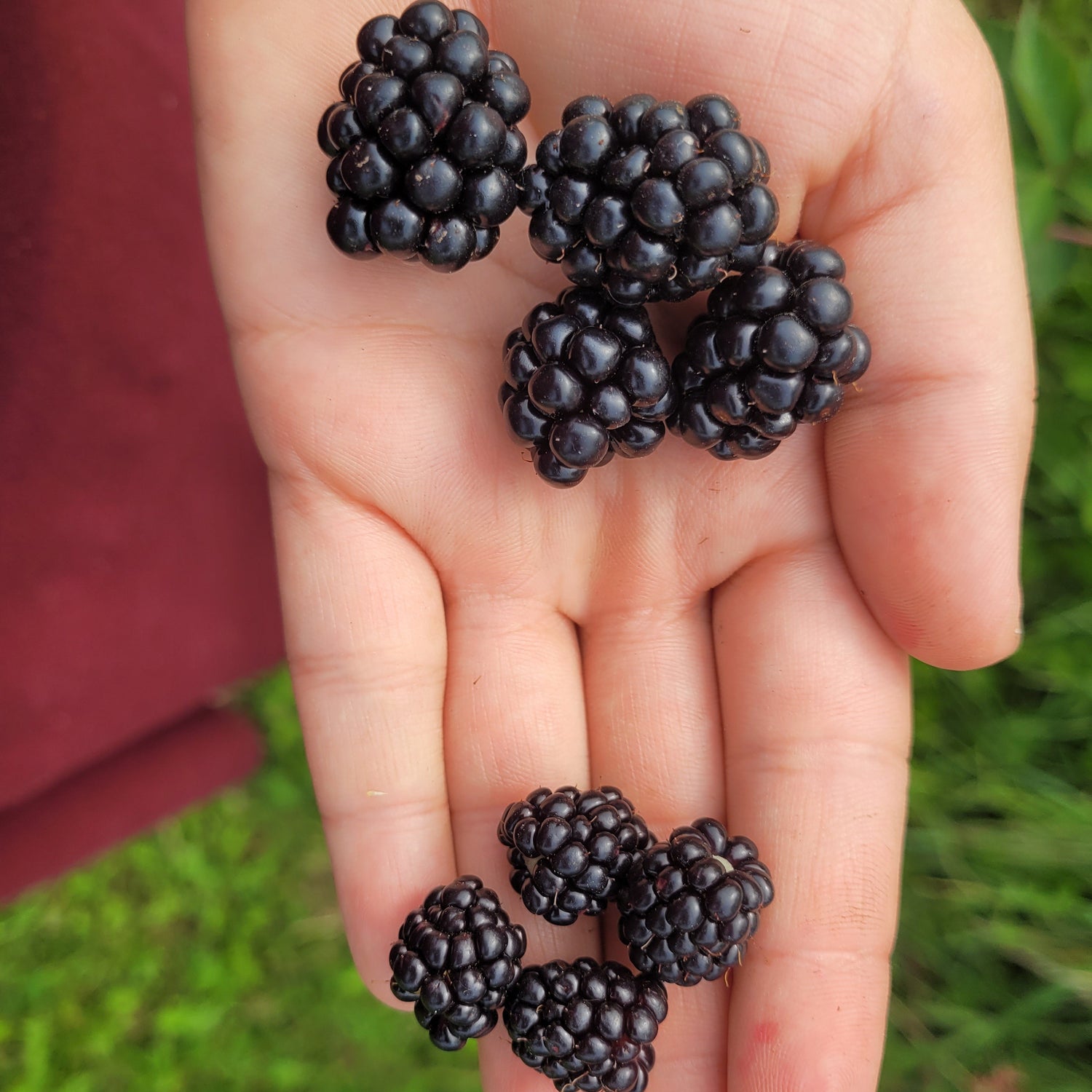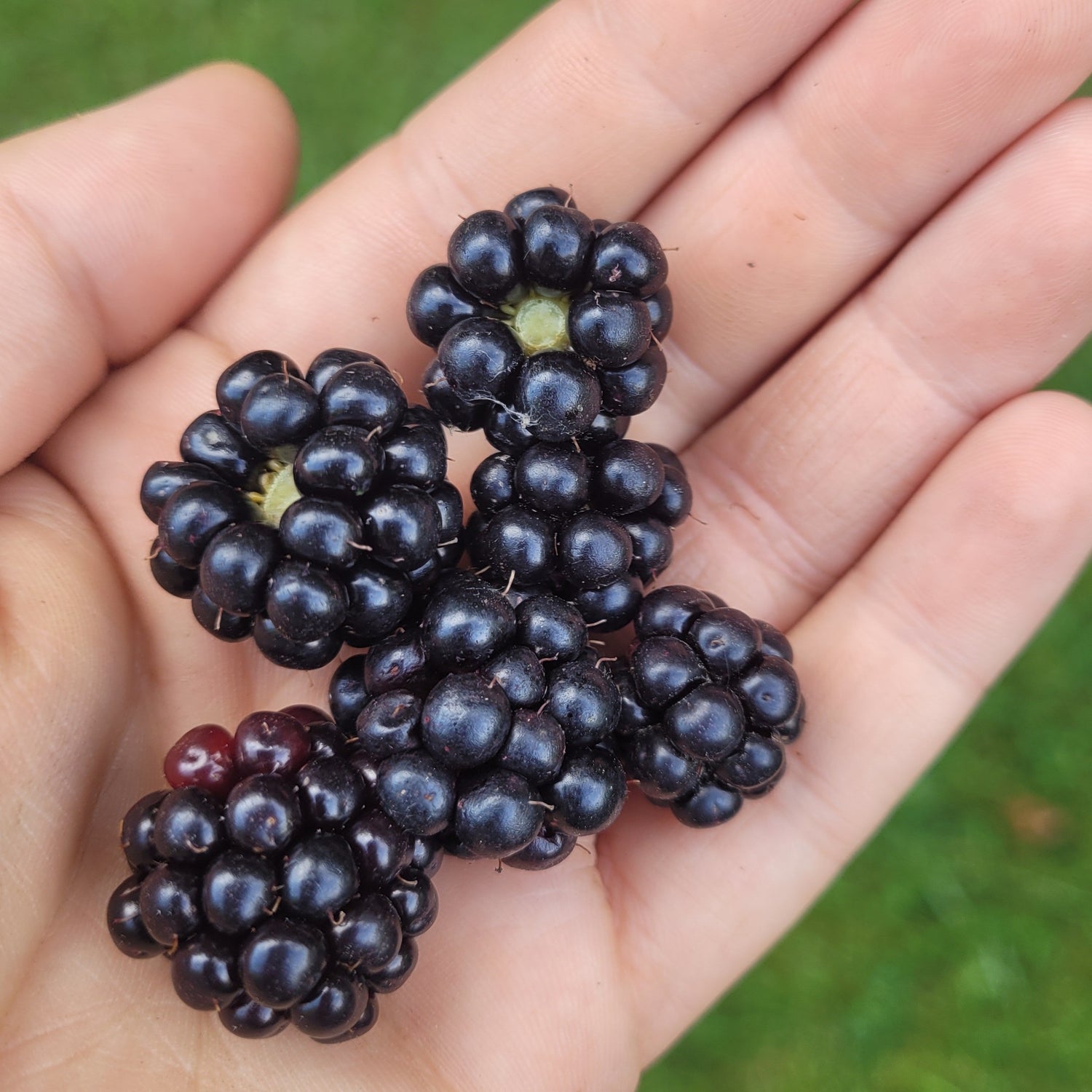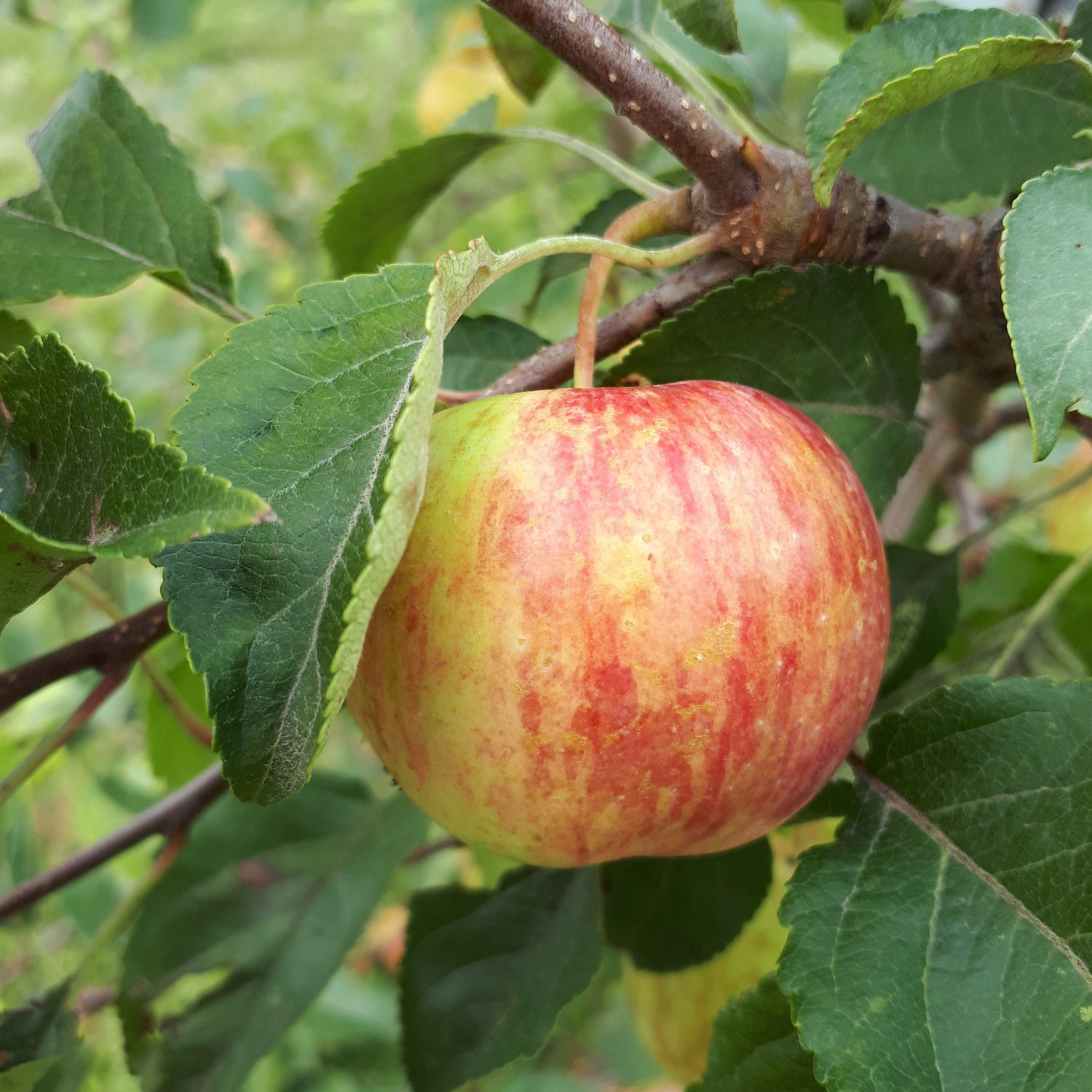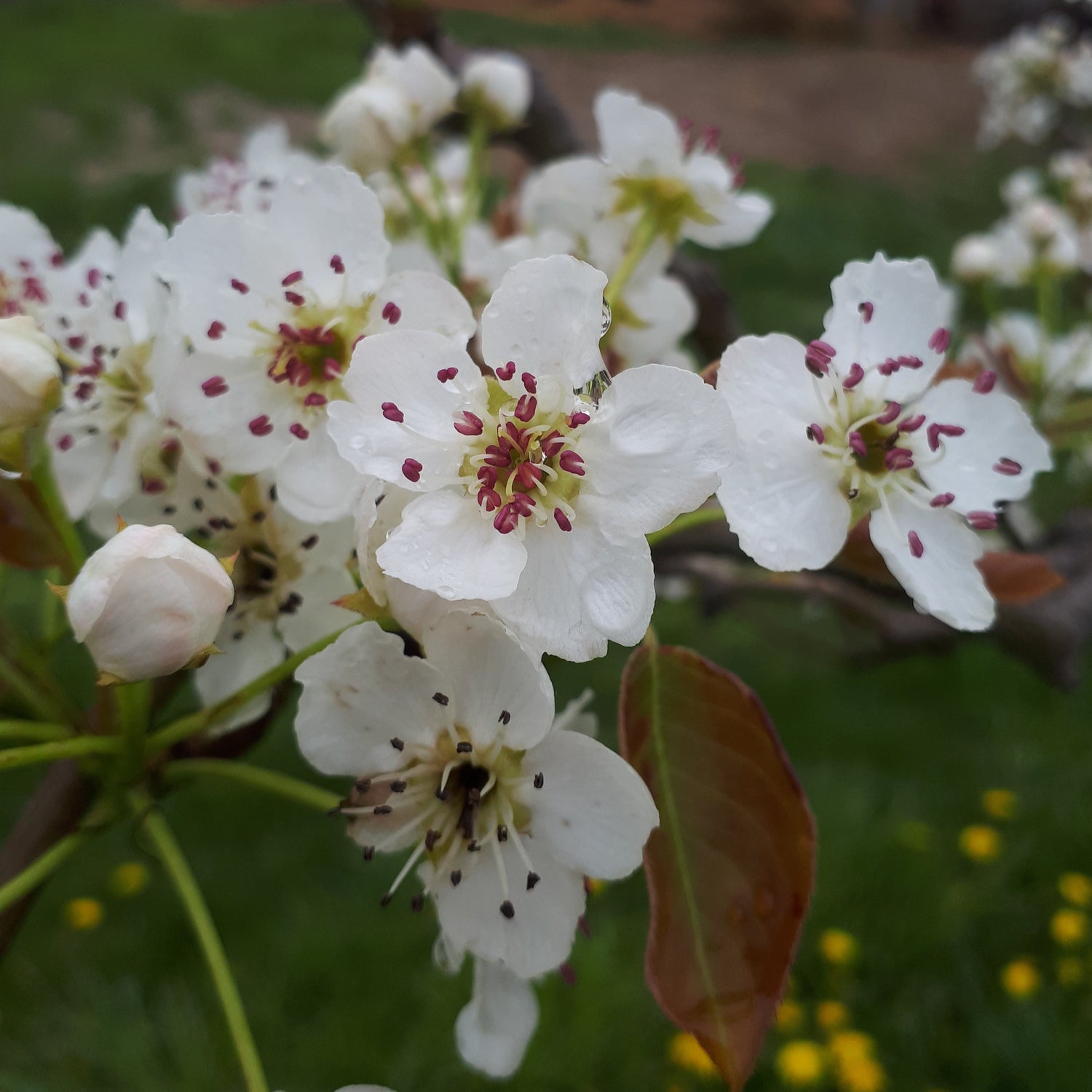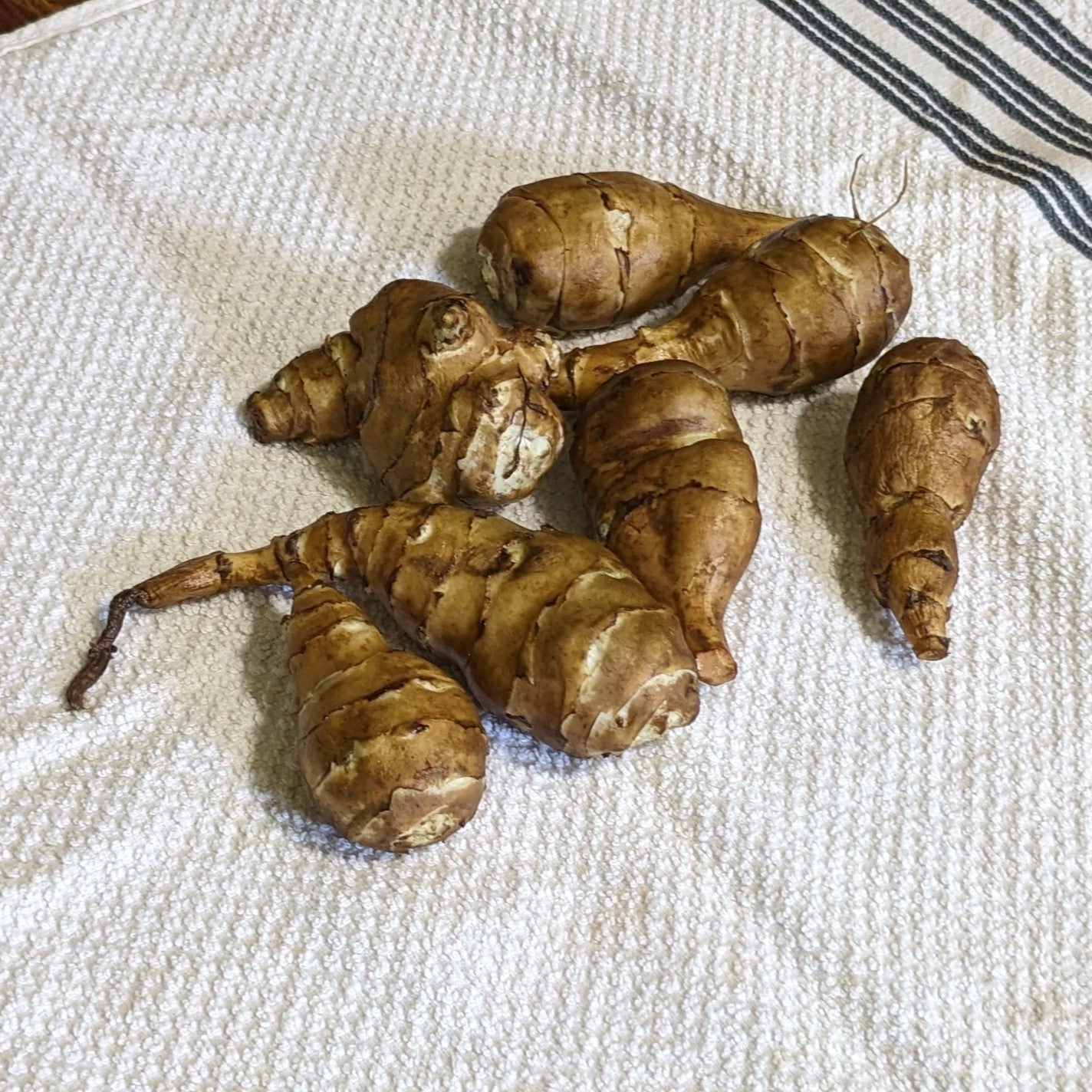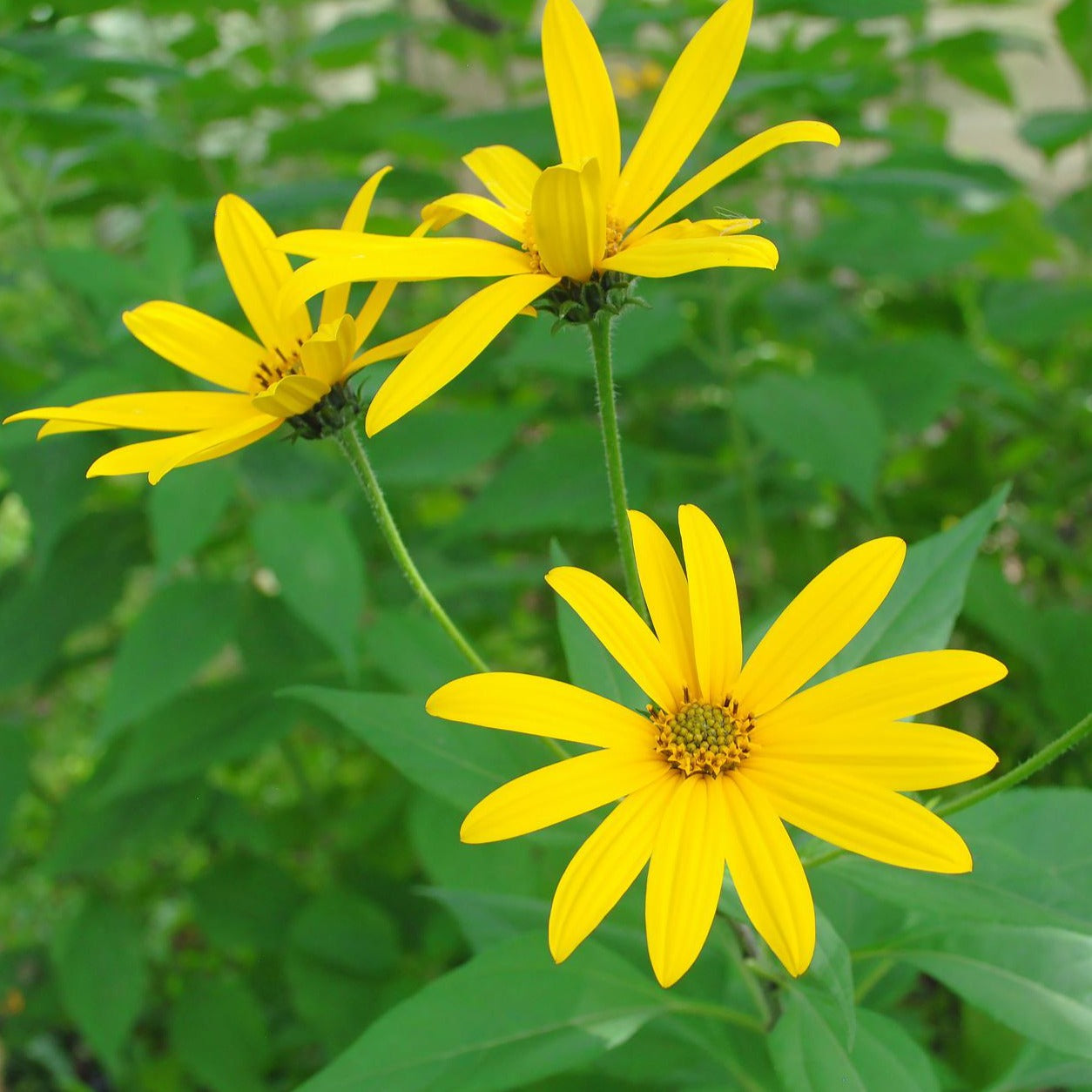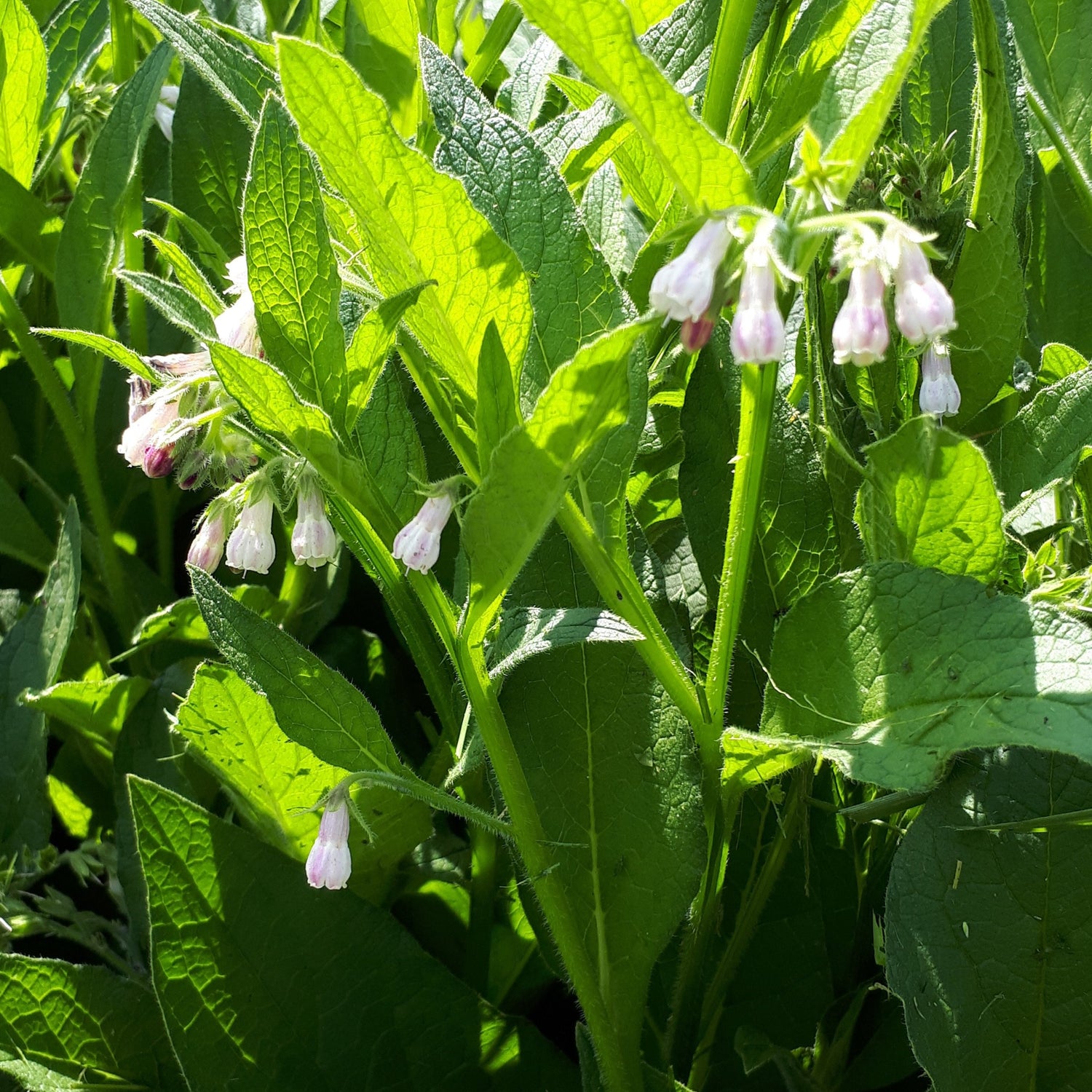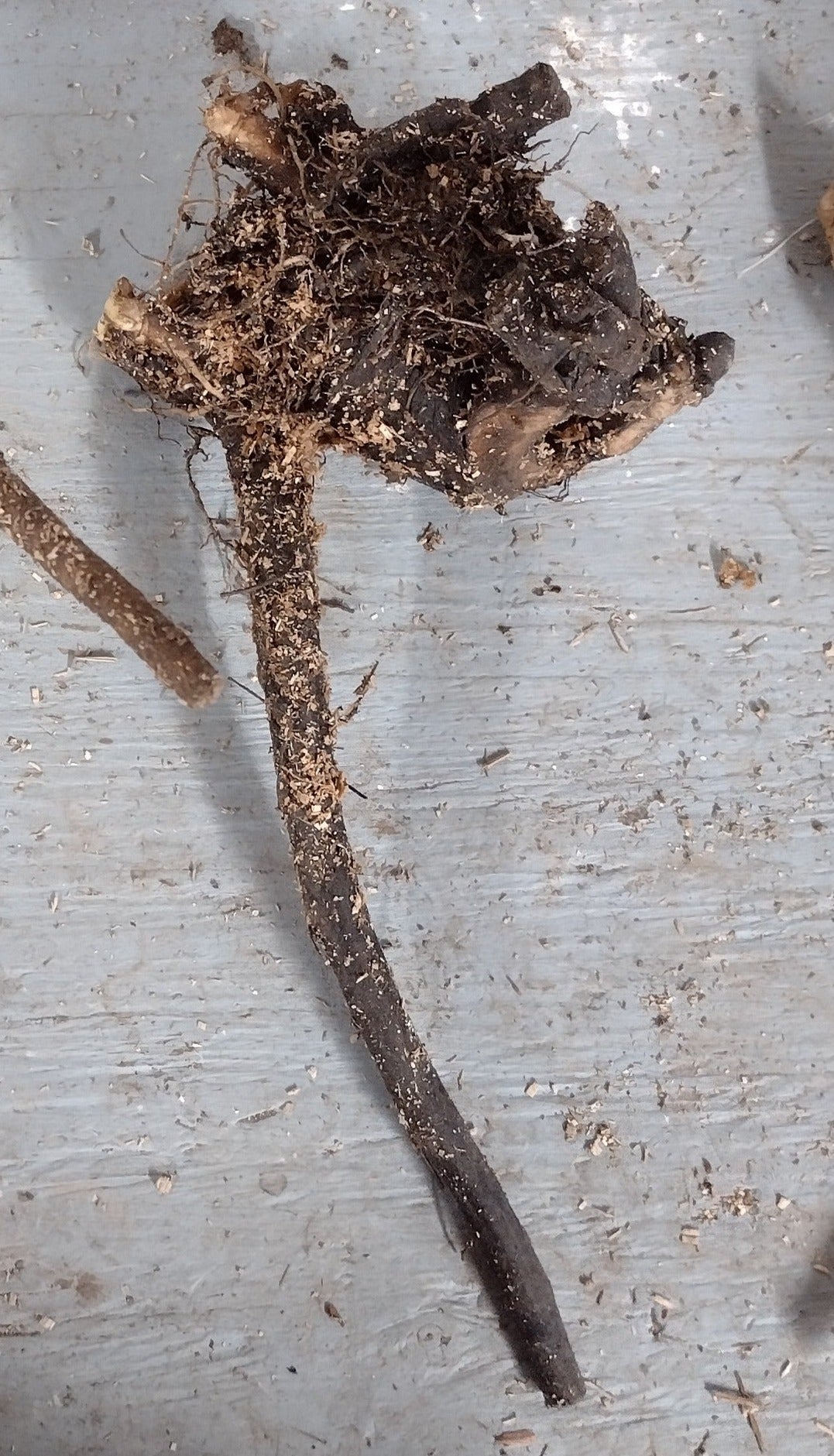Products
Sort by:
475 products
475 products
Species: Vitis riparia x Vitis labrusca
History: Brianna was bred by renowned grape breeder Elmer Swenson as a cross between Riverbank grape (V. riparia) and Fox grape (V. labrusca) as part of his effort to create high-quality grapes that were cold hardy enough to be grown in the cooler parts of North America. Brianna was first bred in 1983 on Swenson's farm in Wisconsin and released in 2001. It was named by Ed Swanson who was planning on naming it Brian due to its vigour but chose Brianna instead, believing the feminine name was more fitting for white wine.
Why We Grow It: Brianna is a seeded green grape with an excellent complex fruity flavour that has hints of grapefruit and pineapple. The medium-large green fruit is suitable for fresh eating or making wine or juice. This variety boasts good disease resistance, vigorous growth, and begins producing fruit at a young age.
History: Brookgold was developed at the Crop Diversification Centre South in Brooks, Alberta and was named for the town and its golden colour. It was introduced in 1979.
Why We Grow It: Brookgold, like other fruit varieties developed in the prairies, is very cold hardy! Although there is sometimes a trade-off between cold hardiness and fruit quality, this variety still produces small yellow freestone plums that are very sweet, making them great for fresh eating and good for canning and preserving.
History: Brown Snout was discovered on a farm in the UK in the mid-1800s. Its name comes from the brown russet around its calyx. H.P. Bulmer, a cider-making company, further propagated and spread this apple in the UK where it is still used today.
Why We Grow It: This medium bittersweet cider apple has small, uniquely coloured fruit that are sweet, slightly astringent, medium-tannin, and have low acidity.
History: Brown's Apple was discovered in Devon, UK, in the early 1900s and is considered a traditional English cider apple. It remains quite popular in the area.
Why We Grow It: This traditional variety boasts cold-hardiness and a resistance to scab. It is great for making cider thanks to being simultaneously high in both acid and sugar, an uncommon feature in most apples. Brown's Apple presses to a fragrant, vintage quality juice.
Species: Vaccinium angustifolium
History: Brunswick lowbush blueberry is the second lowbush variety developed at the AAFC Kentville Research and Development Centre in Nova Scotia. It was discovered growing wild on a blueberry farm owned by Shepoddy Blueberry and Lumber Co. in New Brunswick and was selected in 1965 for further testing. Proving to be an excellent variety that grows well and is relatively disease-resistant, it was named for its province of origin and released in 1977.
Why We Grow It: Brunswick produces firm, medium-sized dark blue berries, bursting with sweet flavour. These lowbush blueberries grow into a compact bush, with glossy dark green foliage that turns a lovely red in autumn. Blueberries are great for baking, for example Steph made some wonderful black currant and blueberry tarts that are pictured here!
History: Bulmer's Norman was imported from Normandy, France to England in the early 1900s by the cider making company H.P. Bulmer. This variety didn't even have a name when it arrived but quickly grew in popularity for use in making cider. This apple has since fallen out of the limelight and is primarily used for grafting other varieties onto its sturdy trunk.
Why We Grow It: Although less popular these days, this variety boasts vigorous growth, decent disease resistance, and a surprising tolerance for cold. This conical, green apple produces a bittersweet juice and is high in tannins.
History: Burbank plums were introduced to the West by Luther Burbank, "The Wizard of Horticulture." He grew them from Japanese seedlings he received in 1885 and the variety was named after him, so, somewhat confusingly, they are actually a Japanese plum despite the English name. The variety was introduced commercially in 1897.
Why We Grow It: Burbank plums are lovely with colours ranging from yellow skin and red blush to a dark purplish red. These clingstone plums have good flavour and firm flesh, great for fresh eating, canning, or making into jelly.
History: This apple was developed in New York in 1974. It has never achieved major popularity but remains a curiosity due to the deep red colour of its skin which causes the flesh inside to become stained pink.
Why We Grow It: Along with its visual appeal, this apple boasts a sweet, sub-acidic flavour that makes it suitable for both fresh eating and making cider. Although these apples don't store well, the fruit hangs onto the tree for three weeks which helps to keep it available a little longer.
Picture of Burgundy apples on the tree courtesy of Shannon McInnis
Species: Quercus macrocarpa or hybrid. Our seeds are collected from trees that may have been cross-pollinated by closely related species so the resulting seedlings may be hybrids.
History: Burr Oaks are native to much of the central United States with populations in Canada stretching from Alberta to New Brunswick. The tree has been planted ornamentally across North America and the durable wood has uses such as flooring and barrels. The acorns, the largest in North America, are a source of food for many animals and indigenous peoples use the bark medicinally. Numerous towns and a book of poetry are named after this tree.
Why We Grow It: The Burr Oak's acorns have slightly less tannins than other oaks, making it the preferred choice for eating. It still requires processing to remove tannins, but once done, the nuts can be toasted, and/or made into flour and used in baking. It is one of the largest oaks in North America, making quite the specimen when full grown.
History: Butirra Precoce Morettini was bred as a cross between Coscia and Bartlett in 1956 by A. Morettini as part of an Italian breeding program. It is mainly grown in Italy, Spain, and Portugal.
Why We Grow It: This is an excellent early ripening pear that is sweet and juicy, with crunchy medium-fine grained flesh which mellows in storage to a delectable buttery texture. It has mild floral notes, with just the right amount of sweetness. The tree produces reliable and heavy crops of yellow fruit with a vibrant red flush that store decently well.
Species: Juglans cinerea or hybrid. NOTE: Butternuts are known to hybridize readily with other closely related species so there is no guarantee on whether these seedlings are pure, though the mother trees appear very true to type.
History: Butternut is an endangered tree native to southeastern Canada and the eastern United States where they grow naturally along sunny stream banks with rich, well-draining soil. The nuts have been used as a source of food and made into a butter-like oil by indigenous peoples. The trees have also been used for making syrup, furniture, and woodcarving. 'Butternut' became a derisive term for people living in the southern US since their clothes were dyed using butternuts, and the name later applied to Confederate soldiers. Unfortunately, Butternuts are highly endangered today due to Butternut Canker which has decimated their population within two decades.
Why We Grow It: By planting endangered species, collectively we can help Mother Nature potentially find a naturally resistant variety of Butternut. The nuts are quite similar to other walnuts but with a milder flavour. They can survive in zone 2, but they must be planted somewhere zone 3 or warmer to produce nuts. The sap can be boiled to make walnut syrup, which tastes very similar to maple syrup but with notes of caramel and butterscotch.
Be mindful of the juglones in the in the roots/nut husks, they are toxic to many other species. They require a buffer of about 50'/30m from the edge of the trees canopy for juglone-sensitive plants. This article from The Garden Hoe has a helpful list of plants that tolerate juglones. However there are recent (2019) studies showing healthy soil high in organic matter and mycorrhizal fungi actually reduce the toxicity of juglones suggesting many plants can grow below juglans species in a healthy ecosystem - it will be interesting to see more study done in this area!
History: Calville Blanc d'Hiver was discovered in France and first documented in 1598. It spread to other countries and was even grown by Thomas Jefferson in Monticello.
Why We Grow It: Known for its rather misshapen and lumpy appearance and the odd red splotches on its green skin, this apples exterior belies a strong, sweet-sharp flavour that makes it great for fresh eating, cooking, and cider. Some claim it rivals Bramley's Seedling as one of the best cooking apples with the added benefit that, unlike Bramley's, it holds its shape when baked or cooked. It is also boasts a high Vitamin C content.
History: Canadian Harmony peaches were developed at the Harrow Research and Development Centre in Ontario and released in 1968.
Why We Grow It: In our quest to bring the most cold-hardy peaches to our Canadian growers (you!), we added yet another excellent peach variety to the line-up. With large, freestone fruit of good quality, Canadian Harmony is hard to turn down. It is a great all-around peach that is good for eating, baking, and preserving; just about anything you can do with a peach. It is less suitable for big growers because of soft flesh, but well-suited for the backyard, yielding juicy, flavourful fruit with good sweetness.
Bare Root Peach Trees
We are very pleased to be able to offer peach trees to our customers. They are both challenging and rewarding plants to grow. However, due to the unique challenges of growing peach trees, and the increased care required for their success, we regrettably cannot offer our standard 90 day guarantee on peaches. Please inspect your peach trees to your satisfaction when you pick them up at the nursery, or immediately upon arrival if they are shipped. For shipped trees, make your claim within 7 days of receipt of the trees. After 7 days of receipt, you will have been deemed to have accepted the trees in as-is condition.
History: This vintage quality cider apple is believed to have originated near Martock in England. This apple is so old it's not entirely certain when exactly it was first discovered, with estimates ranging from the 11th to 14th century.
Why We Grow It: This lesser-known apple is bitter with high acid, featuring a fruity flavour with a bitter aftertaste that is great when made into cider on its own or when mixed into a cider blend.
History: Carmine Jewel is one of several dwarf sour cherry shrubs developed at the University of Saskatchewan in an effort to combine cold hardiness, dwarf stature, and good quality fruit into one variety. This effort was started by Dr. Kerr (for whom Kerr applecrabs were named) in the 1940s and Carmine Jewel was released in 1999. It is considered the hardiest of the cherries they developed. Carmine Jewel cherries are now the most commonly grown commercial cherries in the prairies.
Why We Grow It: Carmine Jewel is a notably productive cultivar with small cherries that have a high flesh-to-pit ratio. Thanks to their firm flesh, they are a preferred variety for freezing and drying. The shrub is on the smaller size, reaching 6-7ft once mature, great for anyone who loves cherries but doesn't have a lot of space!
Species: Vaccinium corymbosum
History: Chandler higbush blueberry was introduced in 1995. It originated in Corvallis, Oregon where it was developed by the United States Department of Agriculture's Agricultural Research Service agency's (USDA-ARS) Blueberry Breeding Program.
Why We Grow It: Chandler produces the largest blueberries in the commercial industry, and plenty of them! They are sweet and juicy despite their size and can be harvested over a long period of time. Blueberries are great for baking, for example Steph made some wonderful black currant and blueberry tarts that are pictured here!
Species: Actinidia arguta
History: Changbai Giant kiwis were discovered by the Changbai Mountain Research Institute of the Chinese Academy of Agriculture near the North Korean border. The variety was likely collected and propagated due to its unusual round shape and excellent flavour. Named for the Changbai Mountains where it was discovered, its name translates literally from Mandarin as 'perpetually white.' It is also named for the exceptionally large fruit it produces.
Why We Grow It: Aside from its interesting origins, Changbai Giant also boasts unusually shaped kiwis compared to other varieties: round like an apple rather than more oblong like other hardy kiwis. The fruit is also very sweet and the plant itself is a little hardier than some other varieties. Like other female varieties, it can produce a large crop of fruits and it is recommended that the vine be grown on a trellis or other kind of support.
If you are interested in rootstock for Spring 2026, either email us with your requests or sign up for restock notifications below.
Looking to graft your own sweet or sour cherry trees? We're happy to offer rootstock!
While we have young stool beds growing, in the meantime we import rootstock from Oregon. Aside from the headache (paperwork) of importing and distance, we are very happy with our supplier's quality, and are happy to offer small scale and backyard operations with rootstock. Every August, we prepare a rootstock order for the following spring, and our order comes up on the pool truck with all the other Ontario orders. Because of this, we aren't able to guarantee ship dates with rootstock orders, as we are at the mercy of the nursery and pool truck; the shipment typically comes in March-April.
If you require more than 1000 rootstocks, we recommend importing it yourself.
We offer the following rootstock varieties:
Mahaleb - Full-size for sour cherries and semi-dwarf for sweet cherries:
- History: This rootstock is so old that its origins are a bit of a mystery, but it has been used in France since at least the end of the 1700s. It was eventually introduced to the US in the mid-1850s and by the 1900s it was more popular than Mazzard due to how easy it is to propagate from seed and its general disease resistance. However, this popularity declined when it was discovered that Mahaleb was incompatible with certain sweet cherry varieties. Despite this, it is still quite commonly used in many parts of the world today.
- Why We Use It: Mahaleb is a cold hardy and disease resistant rootstock that is also quite tolerant of drought. Cherries grafted on Mahaleb tend to be productive, vigorous, and precocious. However, Mahaleb is susceptible to crown and root rot so avoid planting it anywhere that is overly wet.
- Soil: Loam and sandy soils, prefers soils that are deep and well-drained, very sensitive to waterlogged soils
- Growth Habits: Produces a sour cherry 15-30ft tall and a sweet cherry 15-20ft tall, vigorous and precocious, anchors very well in the soil and tolerant of drought, tends to sucker
- Disease Resistance: Resistant to crown gall, canker, and some nematodes but very susceptible to collar and root rot
- Graft Compatibility: Good graft compatibility with sour cherries but incompatible with some varieties of sweet cherries
Mazzard - Full-Size:
- History: Mazzard is the oldest known sweet cherry rootstock and can be dated back to Ancient Greece and Ancient Rome. Despite its age, Mazzard remains the standard for cherry rootstock and even millennia later it remains one of the most commonly used in the world.
- Why We Use It: Mazzard is the most popular cherry rootstock in North America. Although not quite as drought tolerant or disease resistant as Mahaleb, it has better graft compatibility and is tolerant of a wider range of soils. The trees are highly vigorous and can get quite tall.
-
Canadian Hardiness Zone: 5
-
Soil: Prefers loam and sandy loam but more tolerant of wet and heavy soils than Mahaleb
- Growth Habits: Produces a tree over 20ft tall, highly vigorous, some drought tolerance, few suckers
- Disease Resistance: Somewhat resistant to root rot
- Graft Compatibility: Compatible with all sweet cherry varieties and sour cherries can also be grafted on it
Krymsk 6 - Semi-Dwarf:
- History: Krymsk 6 is part of the Krymsk series of rootstock developed at the Krymsk Experimental Breeding Station in Russia.
- Why We Use It: This cold-hardy and heat-resistant rootstock produces a tree with good anchorage that is adaptable to a wide range of soil conditions. So far it has performed much better in our clay soil than Mazzard!
-
Soil: Adaptable to a variety of soil conditions
- Growth Habits: Semi-dwarf, produces a tree 18-25ft tall, produces some suckers which may be more numerous in heavy soils, fruit tends to ripen 1-3 days ahead of trees grafted on Mazzard
- Disease Resistance: Resistant to nematodes and bacterial canker but very susceptible to prunus necrotic ringspot virus and prune dwarf virus
- Graft Compatibility: Compatible with sweet and many sour cherries although compatibility tests are still underway
Please Note: We will be receiving Krymsk 6 rootstock that is non-dormant and grown in ellepots. The rootstock will be too small for grafting the spring that you receive them and should be planted out instead. They may size up enough for summer grafting and would be suitable for grafting the following spring (provided no issues with growth conditions). Shipping fees may be adjusted in the spring since ellepots are more difficult to ship than our bareroot stock.
If any varieties you are interested in have sold out, contact us to be added to our Spring 2026 request list!
Species: Rubus sp
History: Chester Thornless was created and released as a collaboration between the Agricultural Research Service, USDA, Illinois Agricultural Experiment Station, Ohio Agricultural Research and Development Station, and Maryland Agricultural Experiment Station. It was first bred in Illinois in 1968 and was selected for its thornless nature and cold hardiness. It was later released in 1985.
Why We Grow It: Chester Thornless is easy to grow and rewarding. It produces a reliable bounty of firm, sweet, juicy blackberries that are great for a wide variety of uses.
Pictured on the left: top: Chester, bottom: Illini Hardy
History: Chestnut crabapples were bred at the University of Minnesota in 1949. They are one of about thirty varieties that have been produced by the university's breeding program since it started in 1888.
Why We Grow It: The rosy-red Chestnut crabapple produces fruit that is unusually large for a crabapple with a nutty taste. Unlike other crabapples, it is sweet enough to eat fresh and can be used in cider while still being good for traditional crabapple recipes such as making jellies.
History: Some sources claim this fig hails from 1980's Chicago, however it seems more likely to have originated in Mount Etna, Italy. In any case, due to it's hardy nature it's become one of the most common varieties grown in North America.
Why We Grow It: Chicago Hardy is considered one of the most reliably hardy figs for North America. Add to that their excellent sweet, juicy flavour and it's a no-brainer why these figs have become so popular. Skin is purply-blue-bronze, with soft jammy flesh and a sweet flavour with notes of honey. These figs are medium in size, weighing around 35g.
Photos used with permission from http://planetfig.com/cultivars/fcveng8623.html.
Why We Grow It: The saying 'big things come in small packages' holds true for Chinook. Although the fruit is on the smaller side, it boasts a lovely red skin, excellent sweet-tart flavour, a nice aroma, and crisp and juicy flesh. Fans of this variety will be happy to hear that the fruit can be enjoyed well through the winter, it is an excellent keeper and can last 6-7 months in storage. On top of that the tree grows fairly vigorously, starts bearing fruit at a young age, and produces heavy crops (although thinning will be required).
History: Chisel Jersey is believed to have originated in Martock, England in the 1800s. It spread little outside the immediate area for about a century but during the mid-1900s this apple became quite popular in commercial cider orchards. It has, however, lost some of that renown today despite being an excellent cider apple.
Why We Grow It: With small, green fruit featuring a striped red flush, this bittersweet cider apple is highly recommended in England as well as in Canada. It is high in tannins and sugars but low in malic acid and makes a great cider apple.
History: Chojuro (translated from Japanese as 'plentiful') was found as a chance seedling in the orchard of Toma Tatsujiro in Japan around 1895. From there it became the most popular pear in Japan until modern varieties began to supplant it in the 1950s. In Kawasaki, the city where Toma's orchard was located, a monument still stands to commemorate his work as a pear breeder. Chojuro is the most popular Asian pear in North America.
Why We Grow It: This popular Japanese heritage variety is hard to turn down. The flattish round fruit has russeted brown skin and can be quite large, and is excellent quality when the fruit is left to ripen into October: the sweet, crisp flesh takes on notes of butterscotch and/or white freezie! We recommend picking it when the colours turns yellow-brown so it will store through winter, otherwise it does not keep if allowed to over-ripen on the tree.
In Cider Planet, Claude Jolicoeur—a longtime, passionate cider maker and author of the international bestseller New Cider Maker’s Handbook—takes readers with him to the world’s greatest cider regions, providing an expertly guided tour laced with his deep understanding and appreciation for how this “Prince of Beverages” is made.
Inside Cider Planet you’ll find:
- Descriptions of global orchard practices
- Specific apple varieties used in different countries and regions
- Detailed histories of the world’s oldest ciderlands
- Profiles of different cider styles and rituals
- Tips and tricks from some of the most knowledgeable cider producers
Cider, long perceived as a European country drink, is now truly a worldwide culinary delight. Jolicoeur talks about new and emergent regions that have contributed to this growing appreciation, and how they are building upon the old traditions while creating their own new ones.
History: Clapp's Favourite Pear originates from Massachusetts where Thaddeus Clapp discovered it as a chance seedling on his property in the 1850s. It was introduced commercially in the 1860s and continues to be grown in the UK and US today.
Why We Grow It: This old variety is hardy and regularly bears excellent medium-large fruit that are yellow with pink blush. They have good flavour but need to be enjoyed rather quickly since the fruit doesn't store long. The fruit needs to be picked about 10 days before completely ripe and allowed to ripen off the tree.
Species: Helianthus tuberosus, Sunchokes are also known as Jerusalem Artichokes or J Chokes
History: Little is known about the origins of Clearwater aside from the fact that it originated in Maine, possibly as a wild plant found in 1988.
Why We Grow It: Clearwater produces smooth, white tubers with a mild flavour that some say borders on sweet. This is a productive variety and the smoothness of the tubers generally makes them easier to clean. Sunchokes can be prepared and eaten in much the same way potatoes can, making them a very versatile food.
Cold-Hardy Fruits and Nuts is a one-stop compendium of the most productive, edible fruit-and nut-bearing crops that push the boundaries of what can survive winters in cold-temperate growing regions. While most nurseries and guidebooks feature plants that are riddled with pest problems, veteran growers and founders of the Hortus Arboretum and Botanical Gardens, Allyson Levy and Scott Serrano, focus on both common and unfamiliar fruits that have few, if any, pest or disease problems and an overall higher level of resilience.
Inside Cold-Hardy Fruits and Nuts you’ll find:
- Taste profiles for all fifty hardy fruits and nuts, with notes on harvesting and uses
- Plant descriptions and natural histories
- Recommended cultivars, both new and classic
- Propagation methods for increasing plants
- Nut profiles including almonds, chestnuts, walnuts, and pecans
- Fertilization needs and soil/site requirements
- And much more!
Species: Symphytum sp.
History: Comfrey plants are native to various continents around the world including Europe, Asia, and North America. Common names such as boneset and knitbone and its genus name referencing the Greek 'symphis' meaning 'growing together of bones' indicates it may have been used medicinally for mending bones. Comfrey is now popular as a permaculture plant.
Why We Grow It: This classic permaculture plant grows incredibly deep tap roots, mining rich nutrients from deep below the soil surface. It's a living mulch that 'molts' 3-4 times each season. It's used in traditional medicine and creates a healthful compost tea full of calcium and potassium. It grows up to 70 cm tall, before molting down, and spreads slowly over the years. As an added benefit, both honey bees and bumble bees love visiting the blossoms too!

